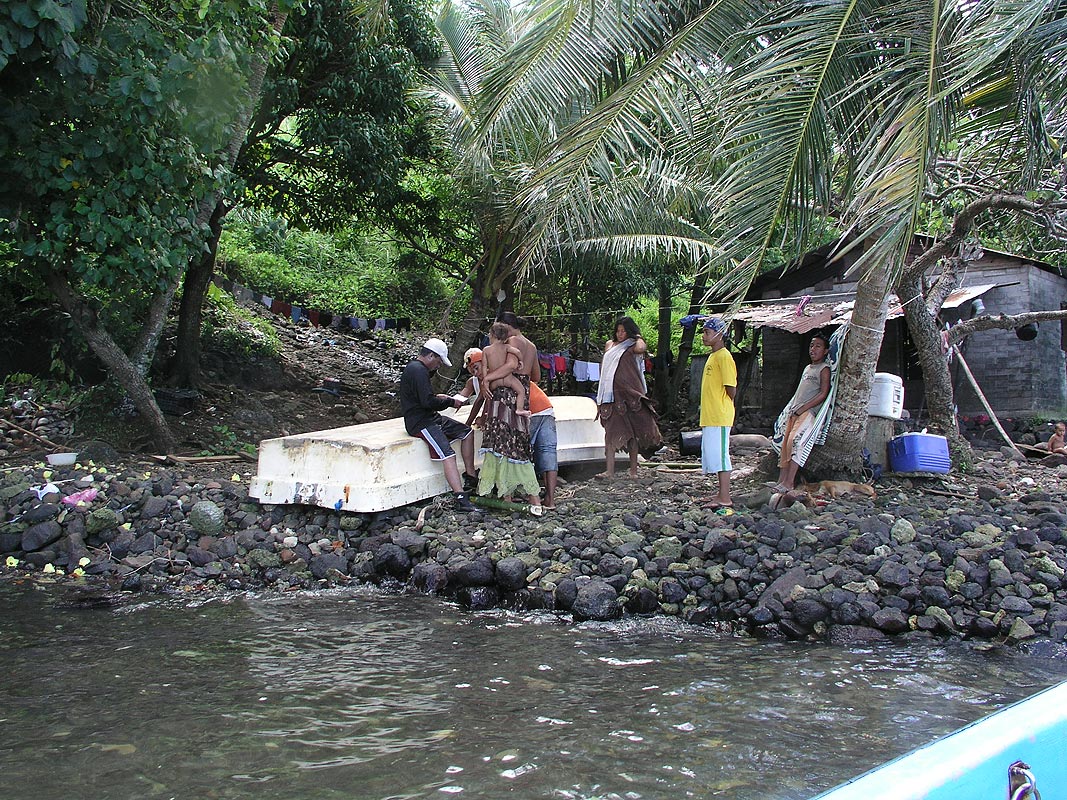The product
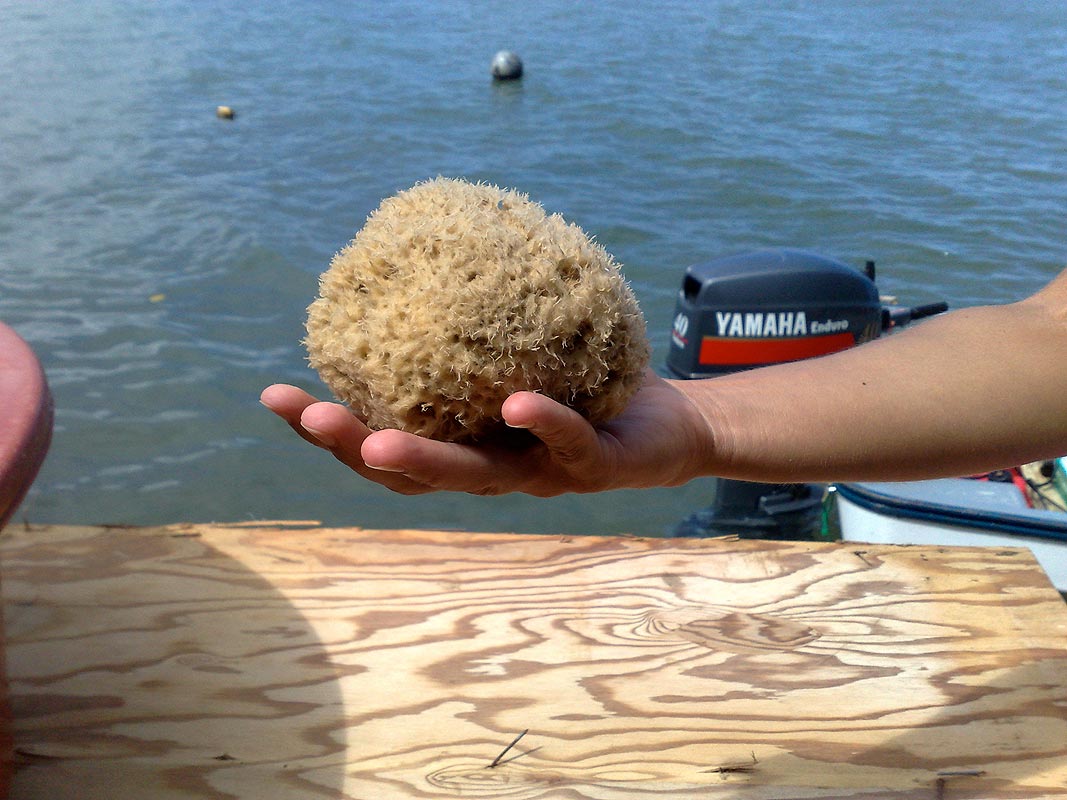

The Institute for Marine and Environmental Research (MERIO) in Pohnpei is a leader in the study of sponge farming.
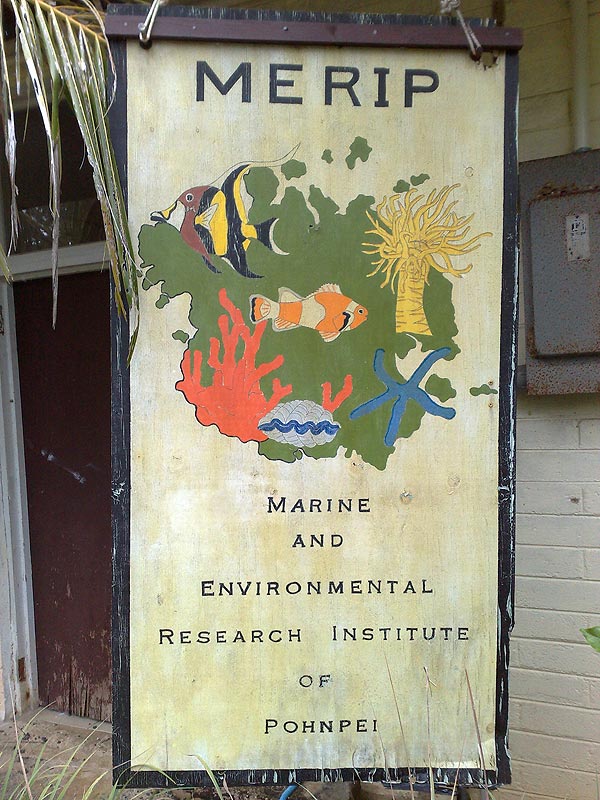

Visit by marinecultures.org of the research station in Phonpei.
(f.l.t.r. C.Vaterlaus, Mr. Waldom, C.Sacchi)
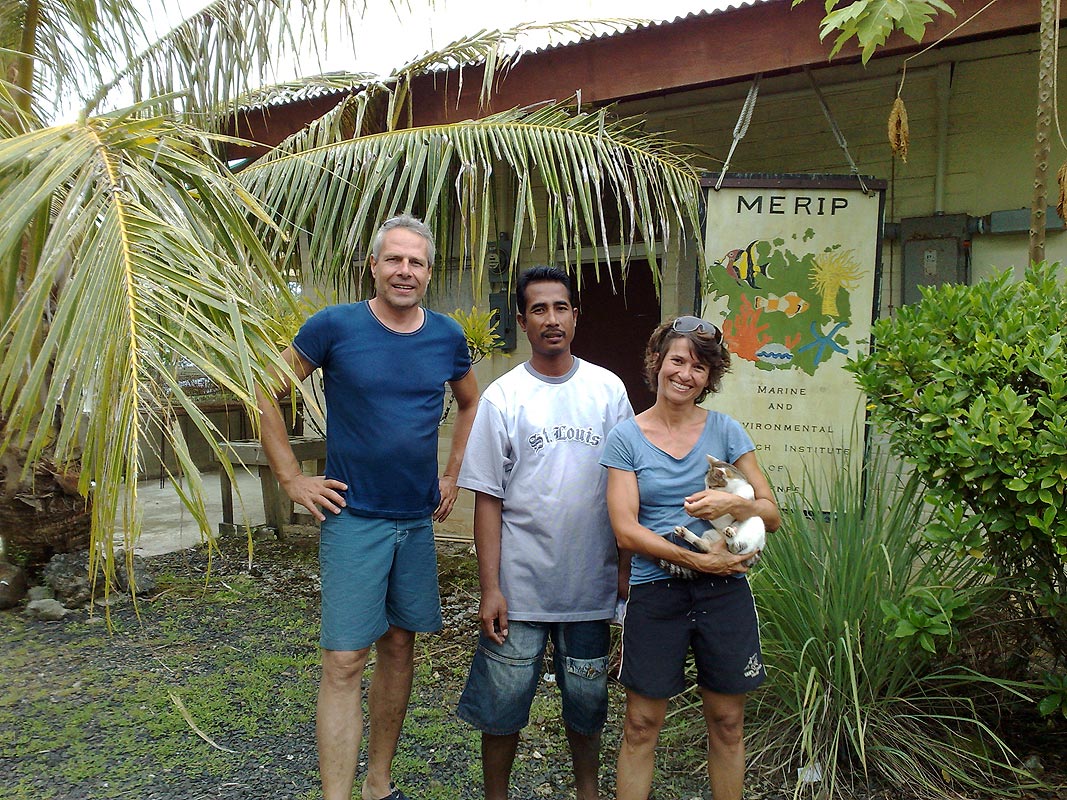

A Micronesian Woolsponge on a coral block.
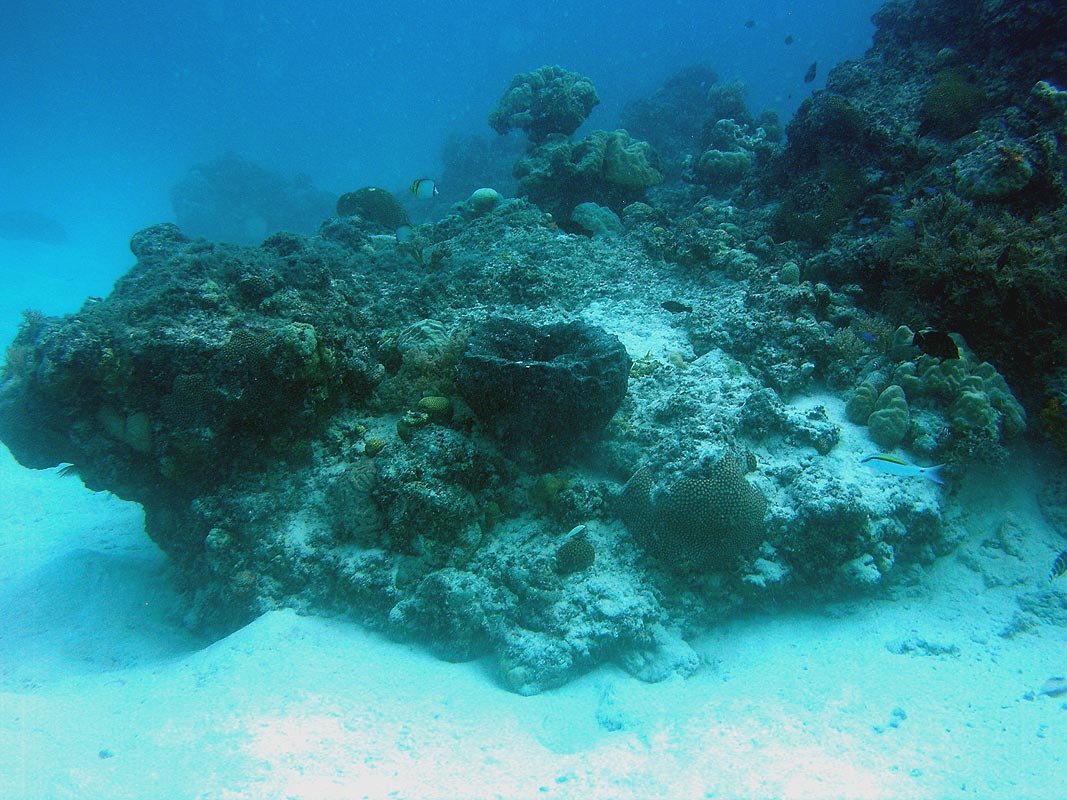

Another fine specimen.


And another one.


Search for sponges. Once you have a good broodstock it needs no further collections.
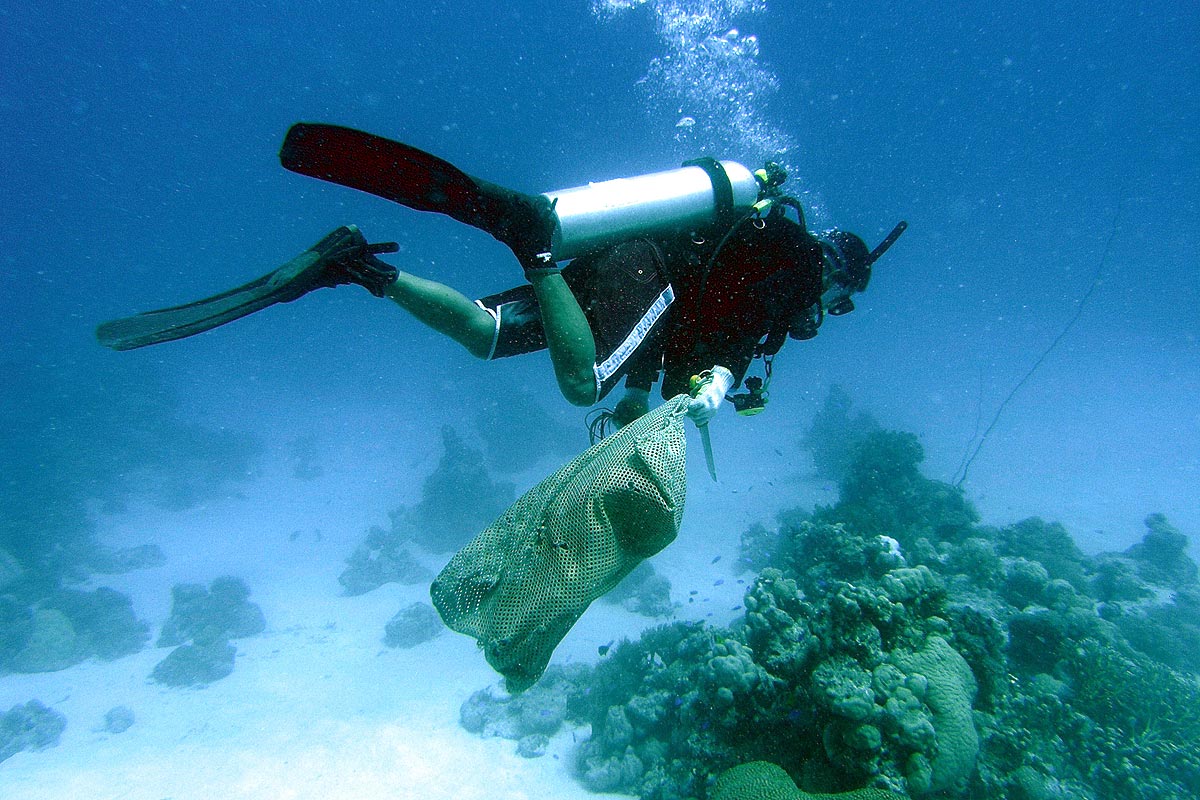

If we take only 3/4 of a sponge he does not die down but grows back.
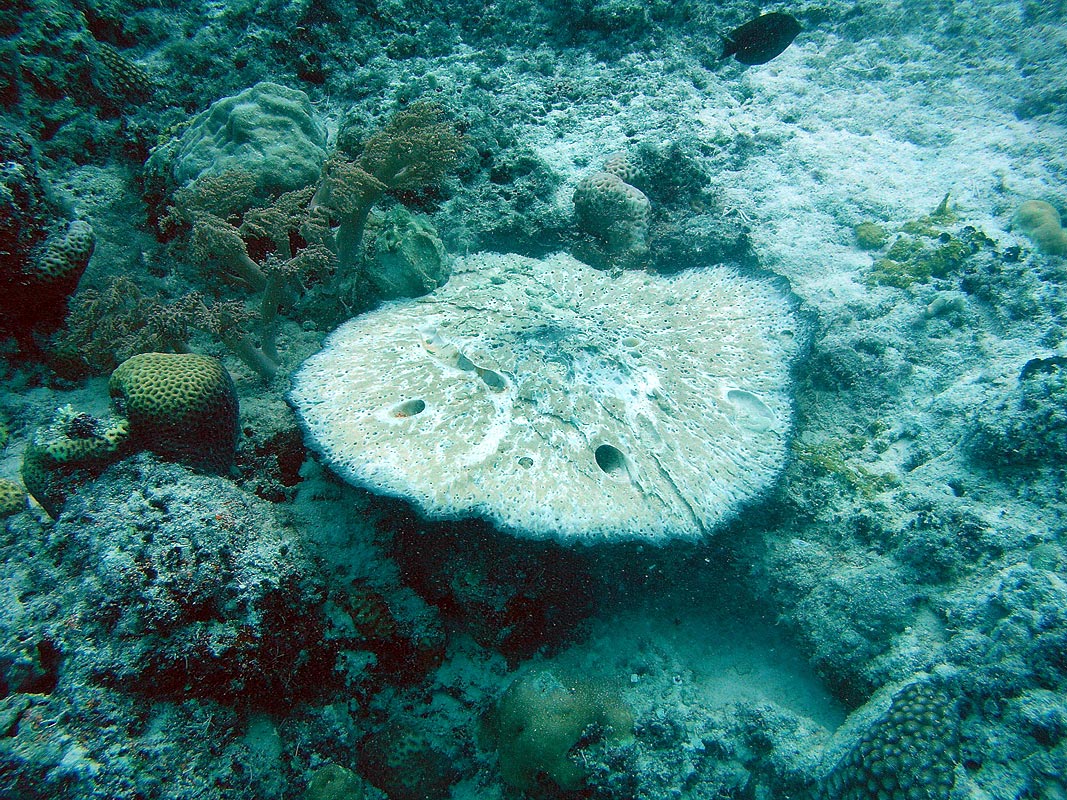

The sponge is mounted on a string.
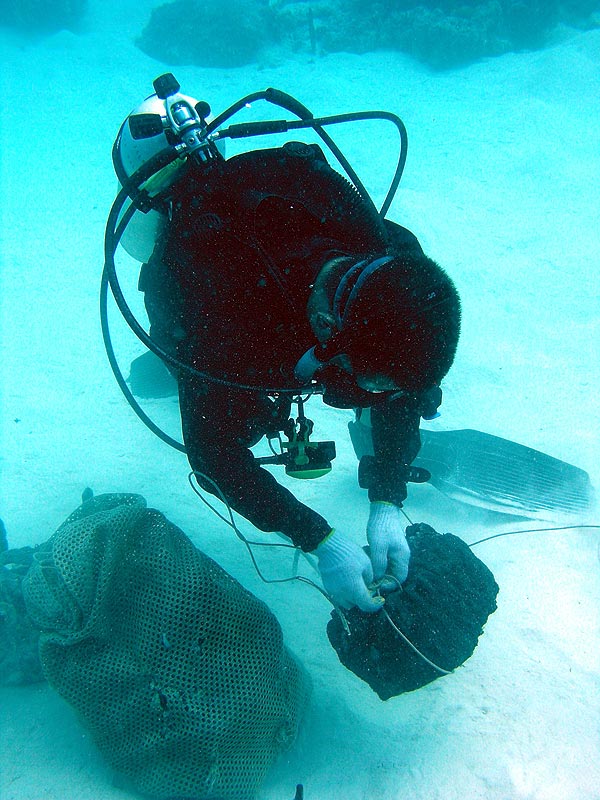

The collection is completed successfully.
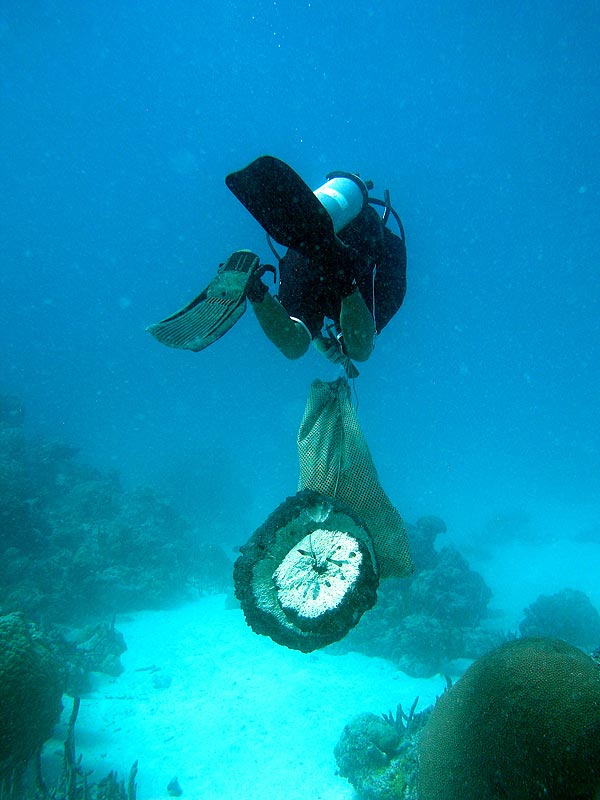

The sponge should never be compressed and must therefore be lifted very carefully into the boat.
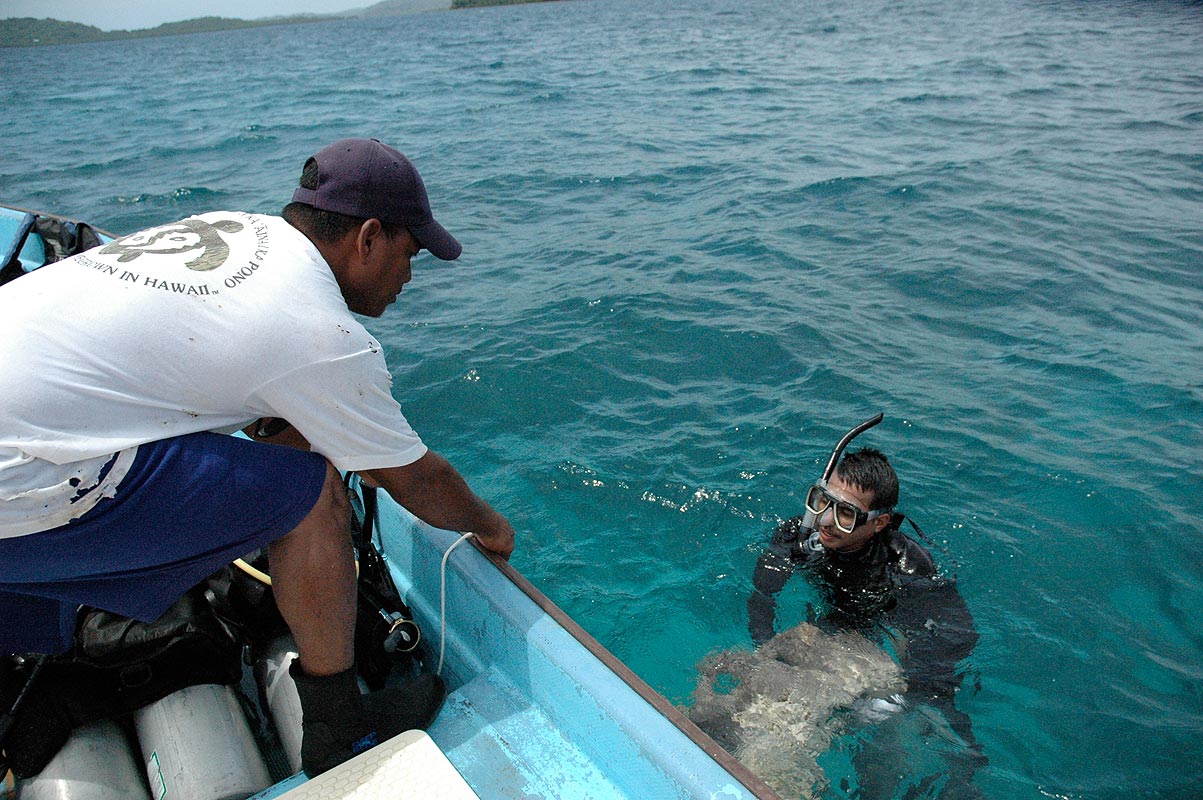

The sponge may be exposed only for a short time to the air and direct sunlight.


That should be enough.
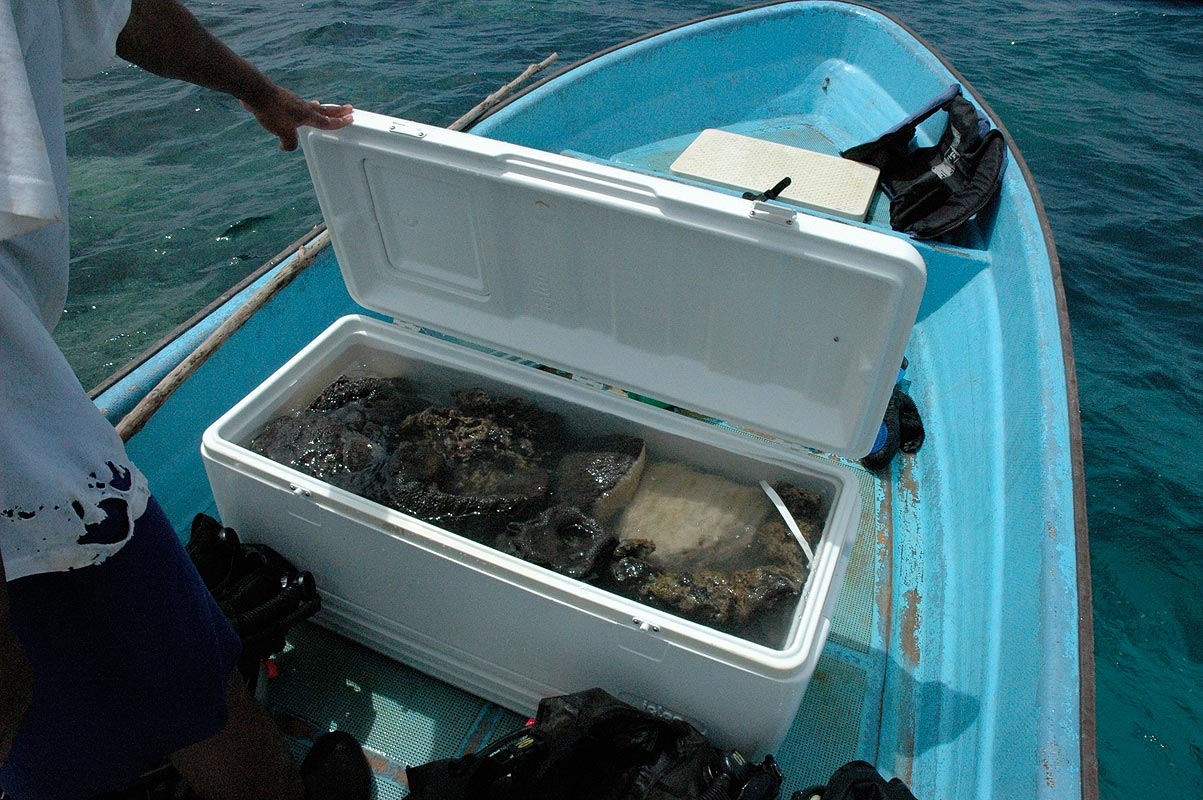

A sponge farm should have a depth of 6-7 meters and not be exposed to very strong currents.
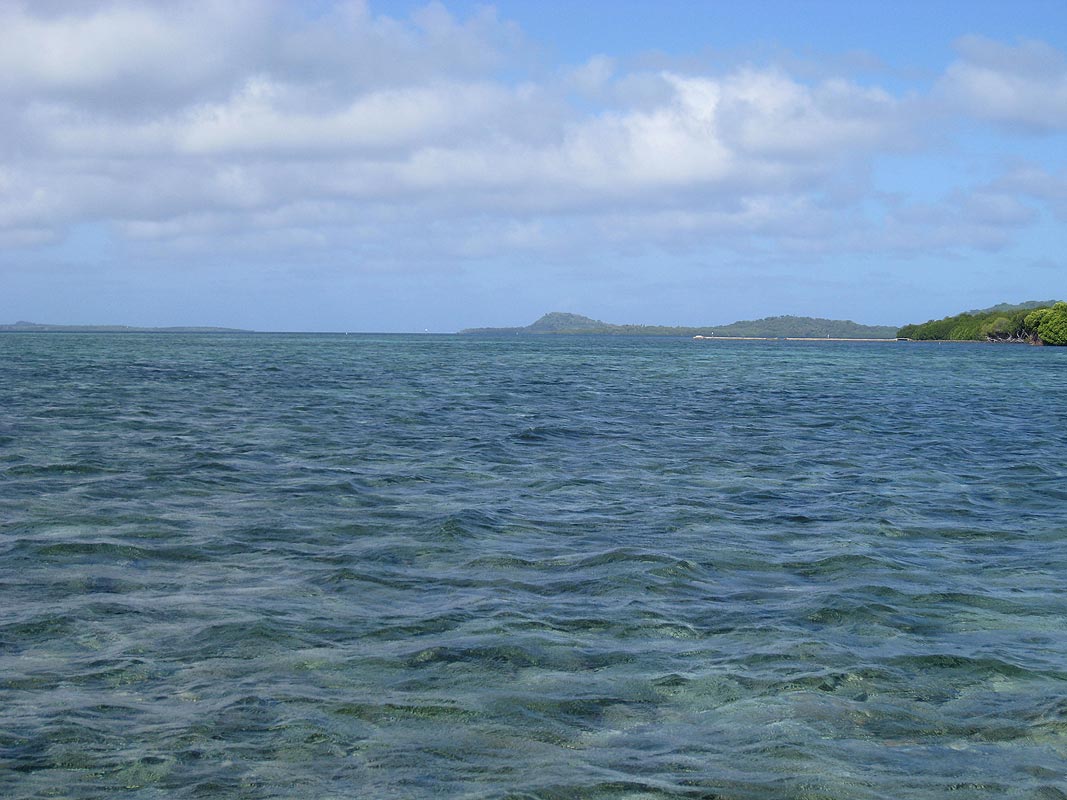

The farm should always be 1-2 meters below the lowest water level. So boats do not damage the construction and the management is easier.
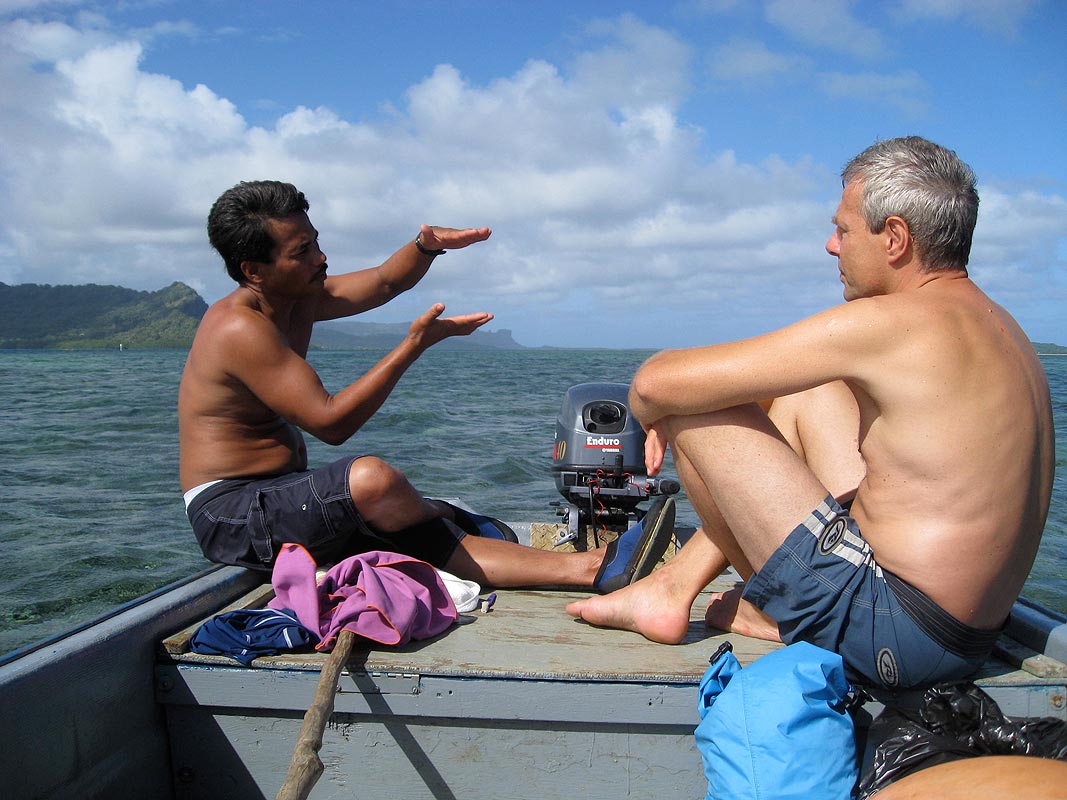

If present, the lines can be carefully attached to coral blocks.
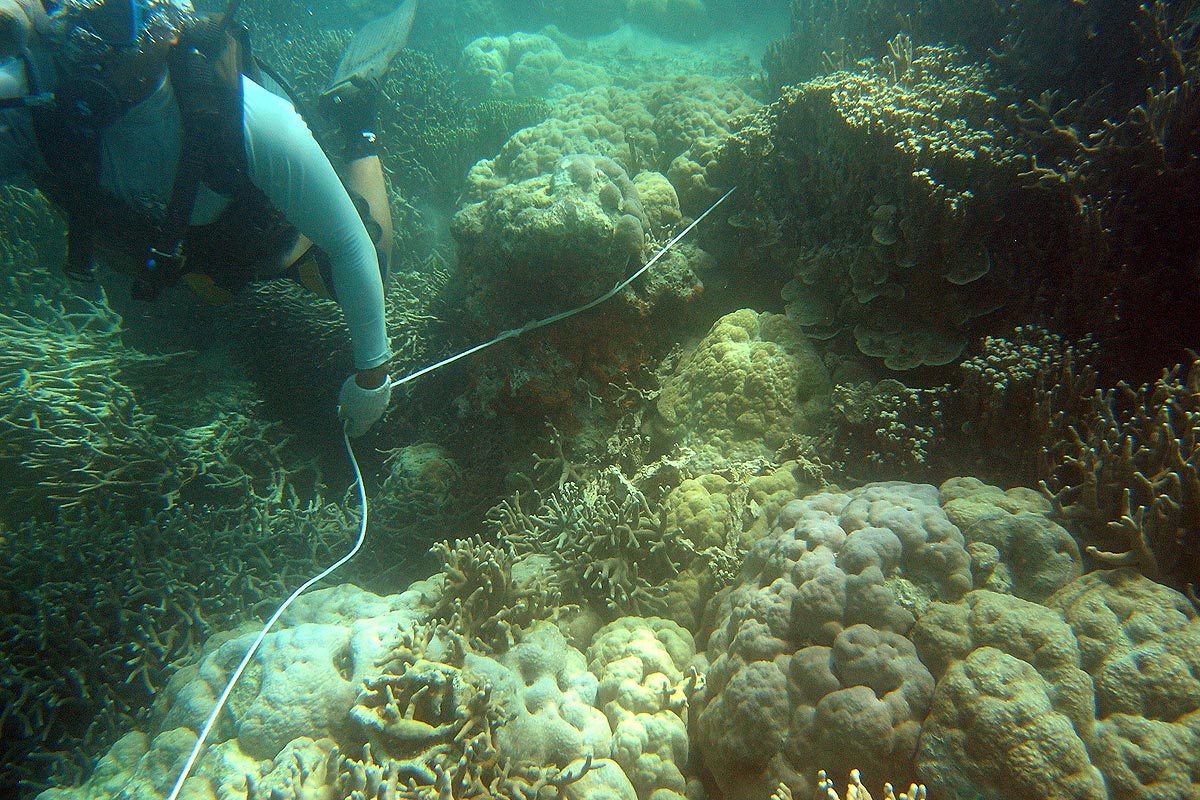

Only select very strong coral. The ropes are subjected to strong forces during storms and strong currents.


If for the attachment there is no coral or rocks around anchors and buoys must be placed.
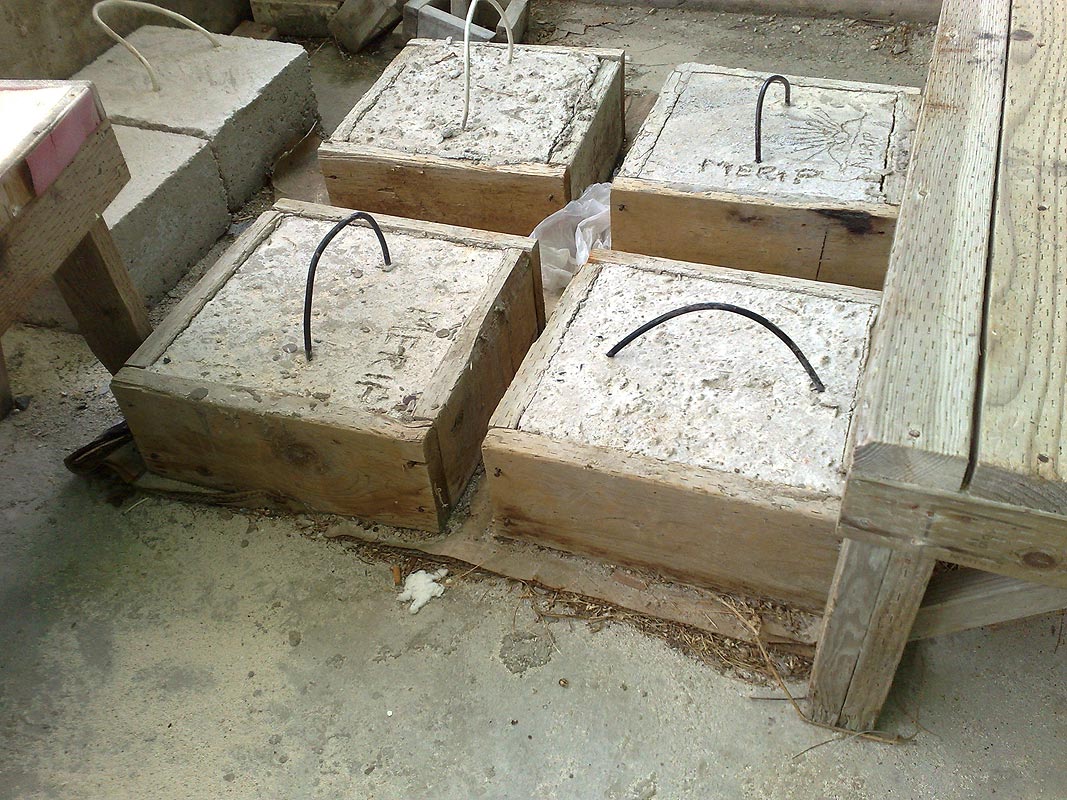

The first main rope is tensioned. Length: 20-30 meters.
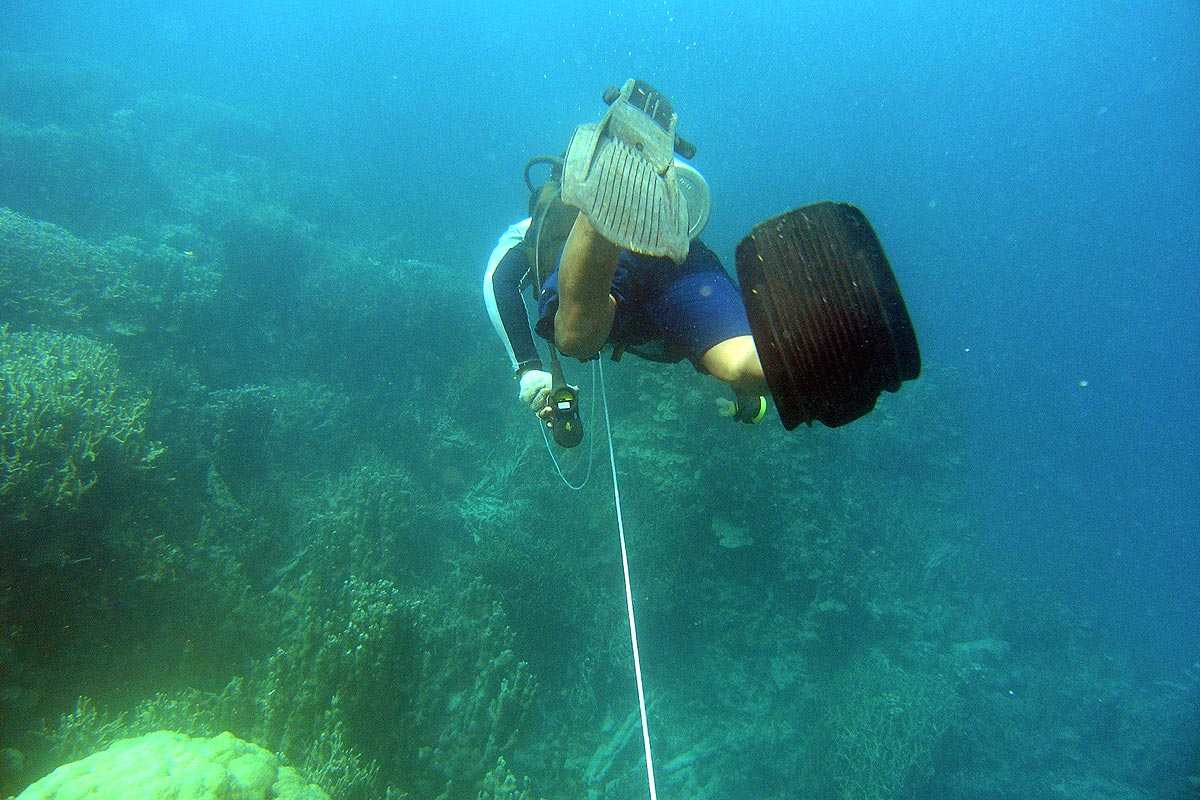

Parallel to the first rope, a second line is tensioned.
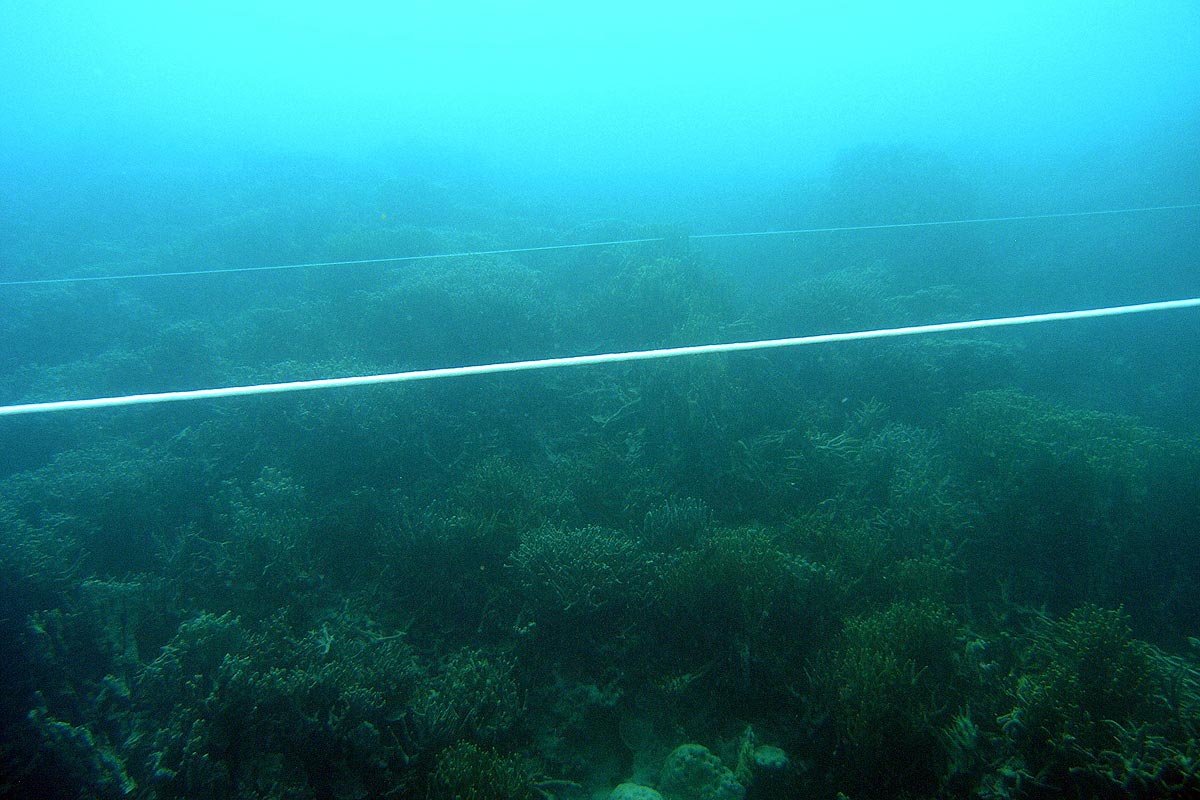

With an additional rope, the main lines are temporarily brought to the surface.
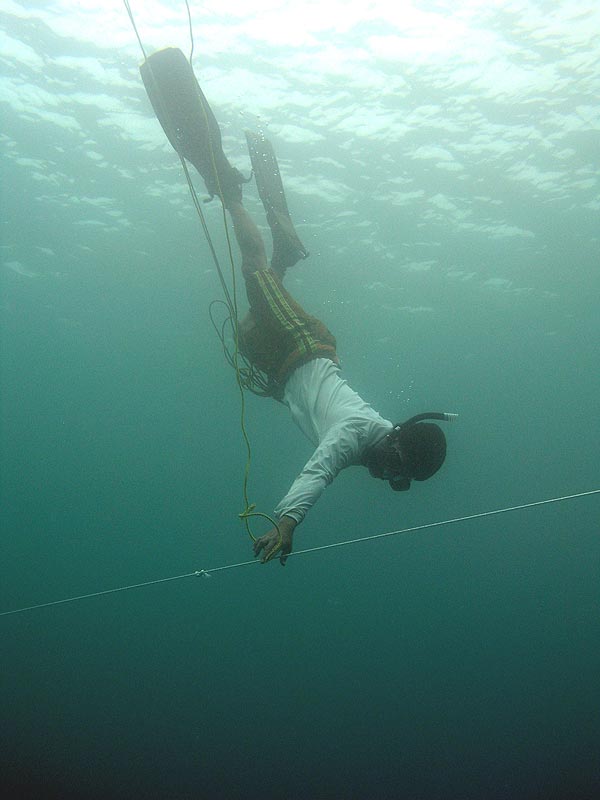

Pulling up the construction to a temporary buoy.
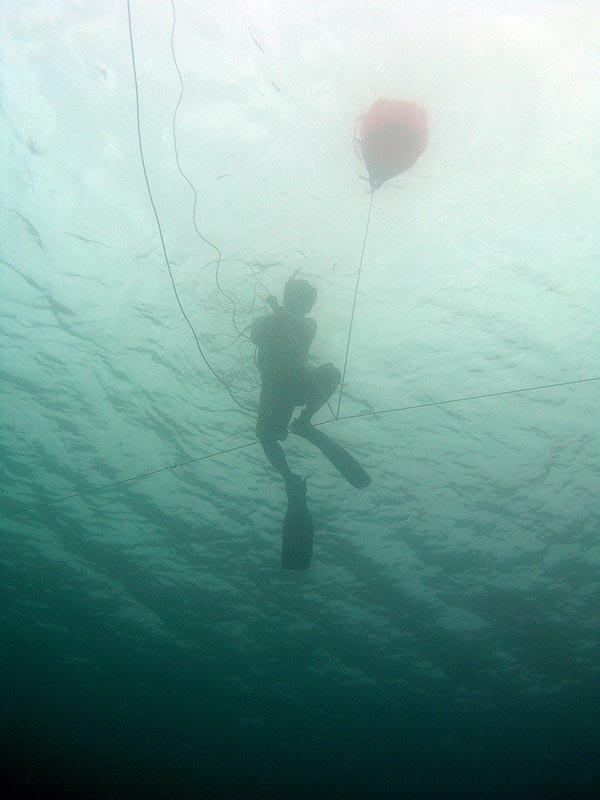

Provisional fixation.
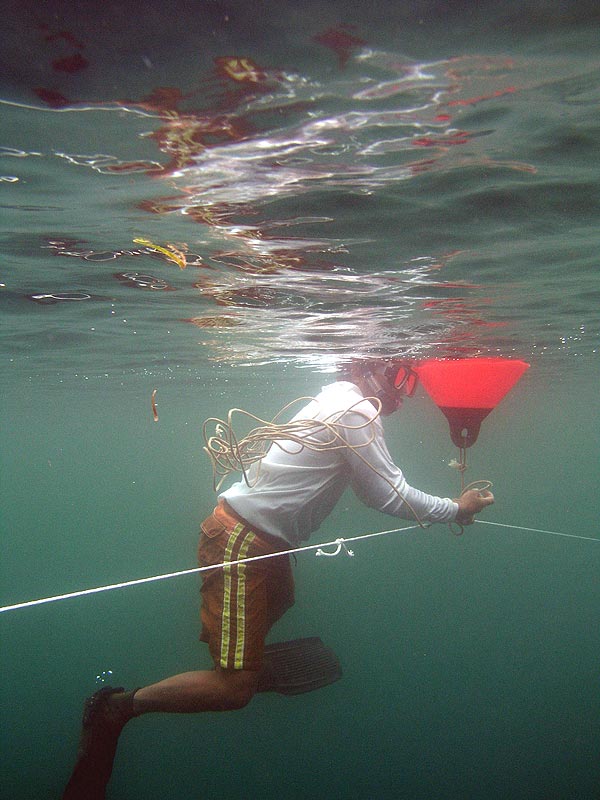

The sponge farm must be clearly marked for the vessels and the retrieval of the farm.
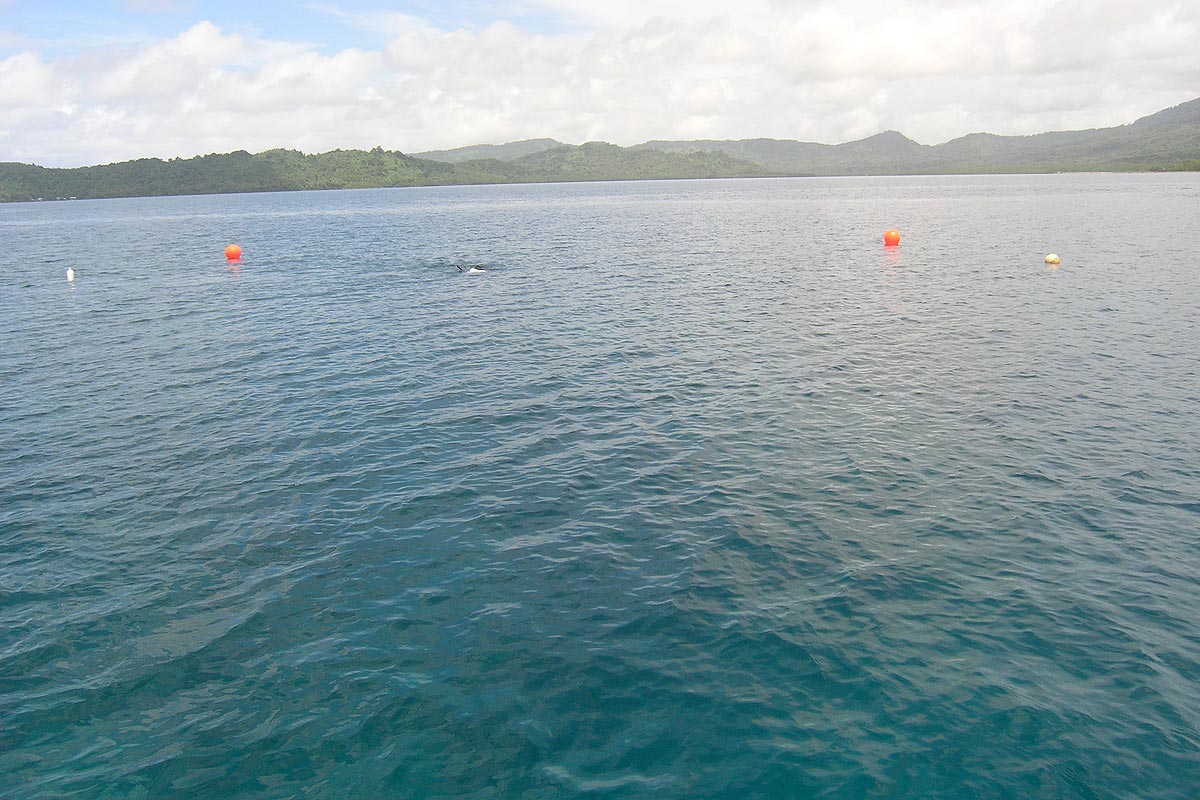

Now, the connection lines between the two main lines can be attached.
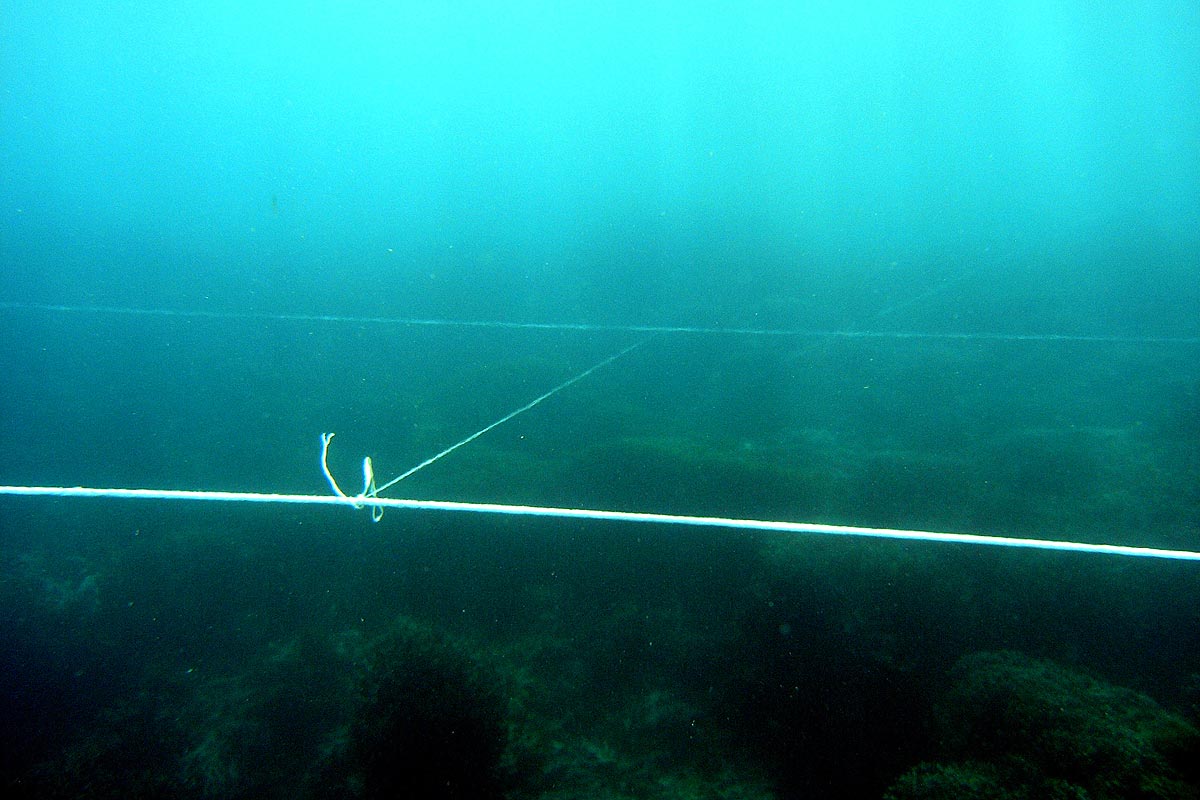

If the main lines are temporarily on the surface, the work is relatively simple.
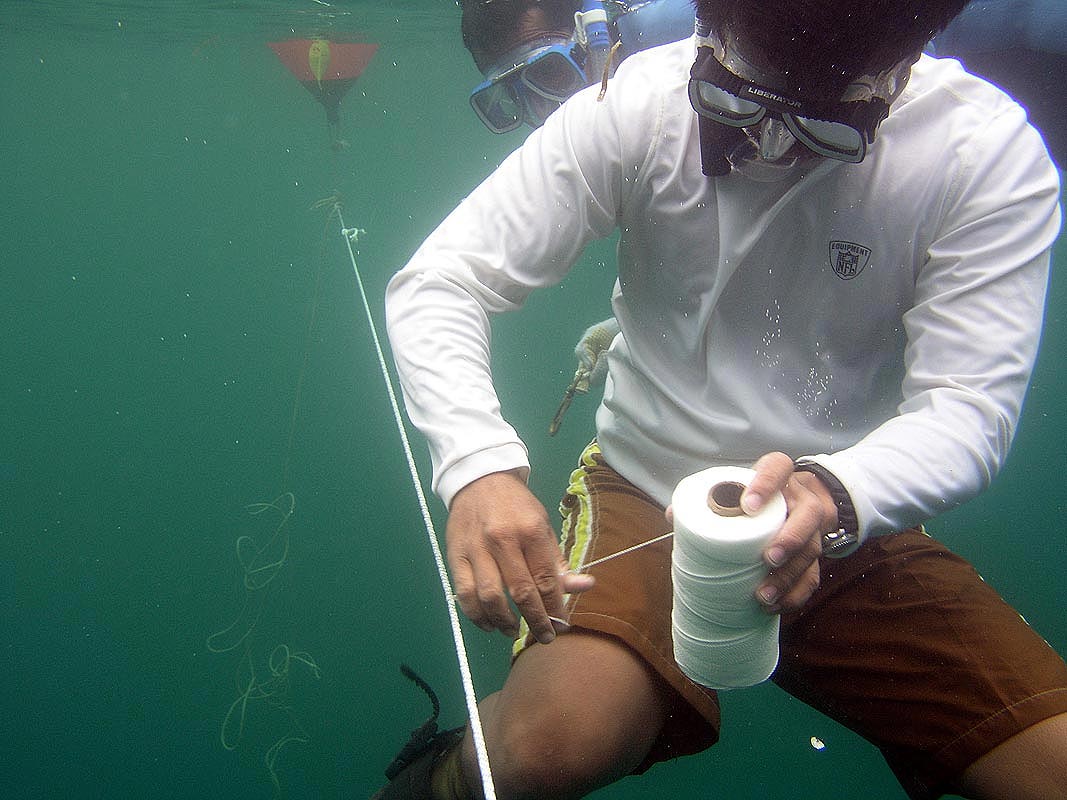

The connection lines may not be able to slip on the main lines.
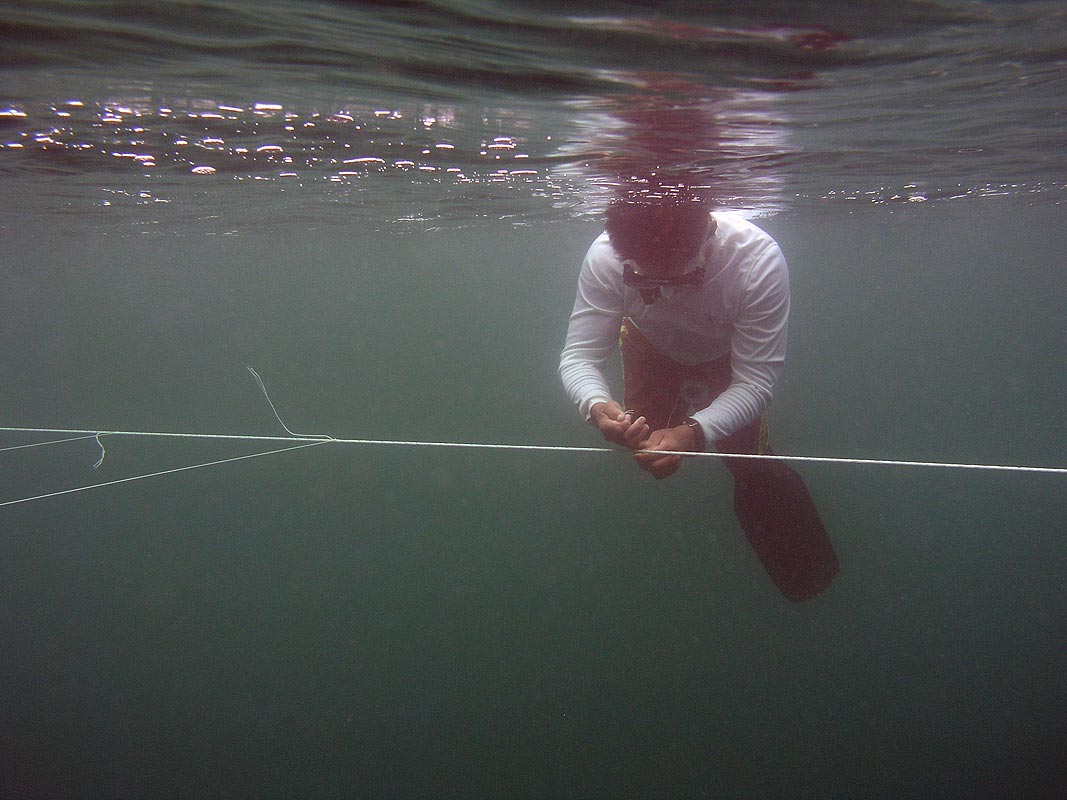

So that the sponges did not catch on to the next line the small lines must have 50 -70 cm distance to each other
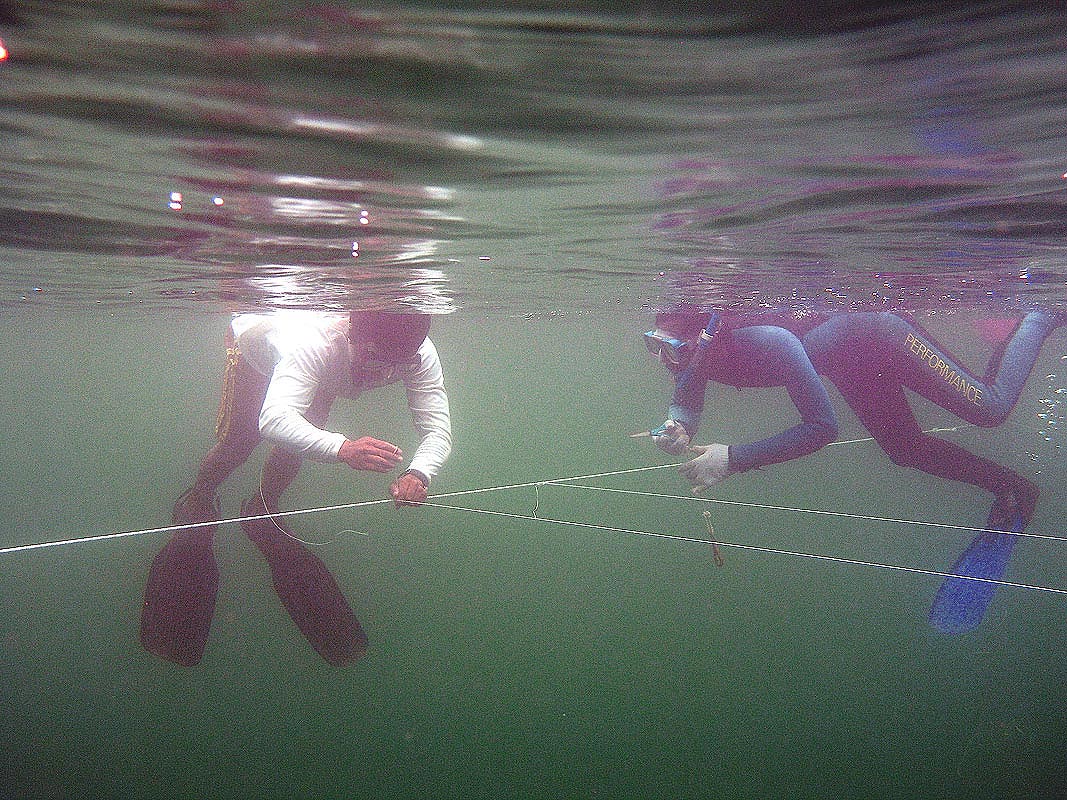

Cutting the seedlings must always be made with a very sharp knife so that the sponge is violated as little as possible.
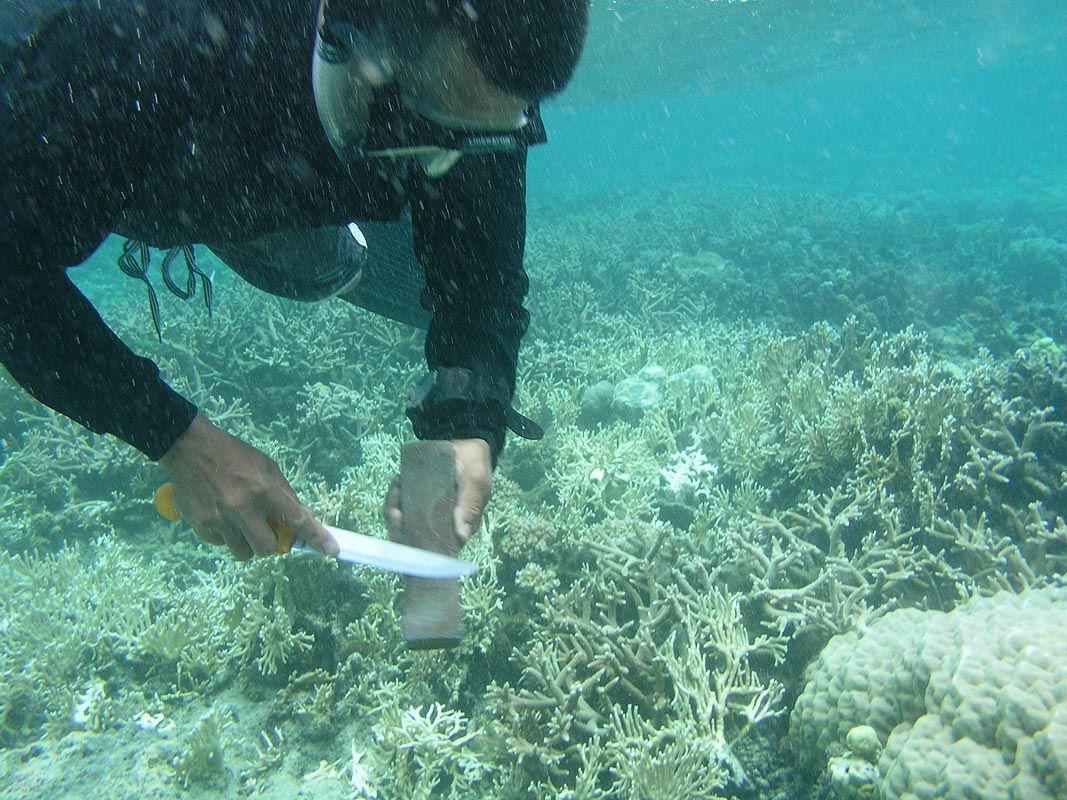

At each of the remaining cubic seedlings a piece of dark skin must remain. Otherwise the sponge will die.
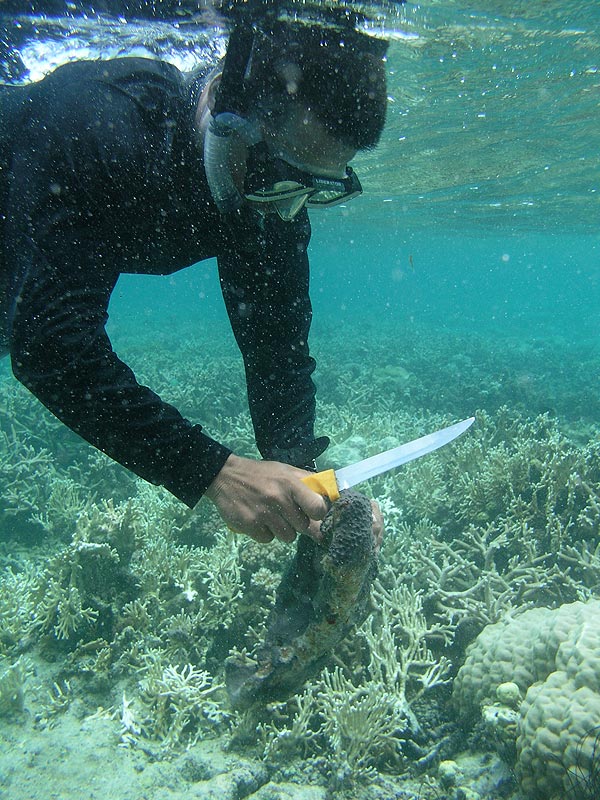

Preparation of mooring lines.
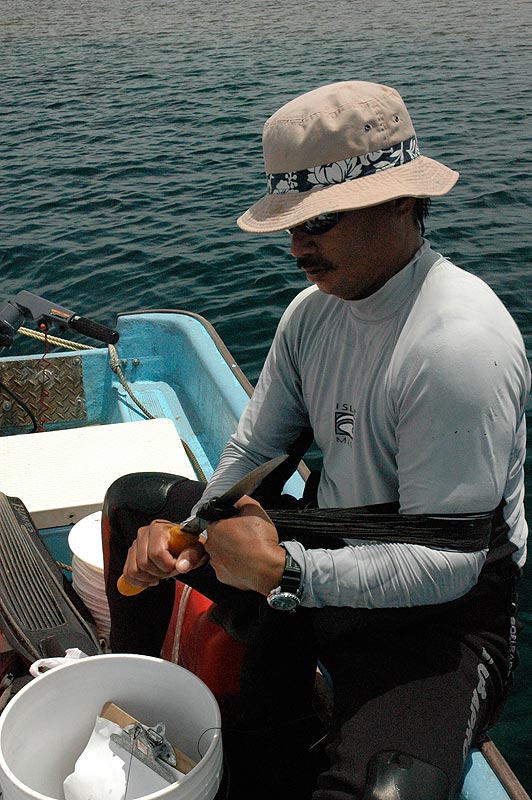

The length of the mooring lines should be around 70-80 cm.
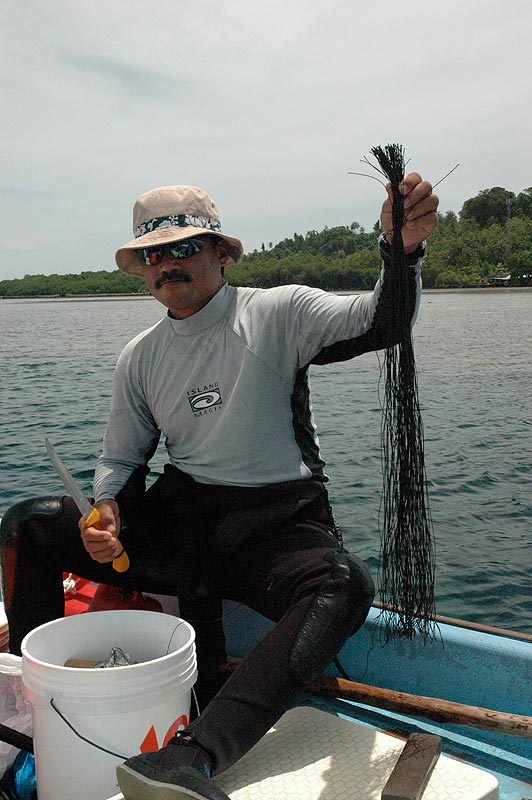

With a tick the cord is pulled through the seedling.
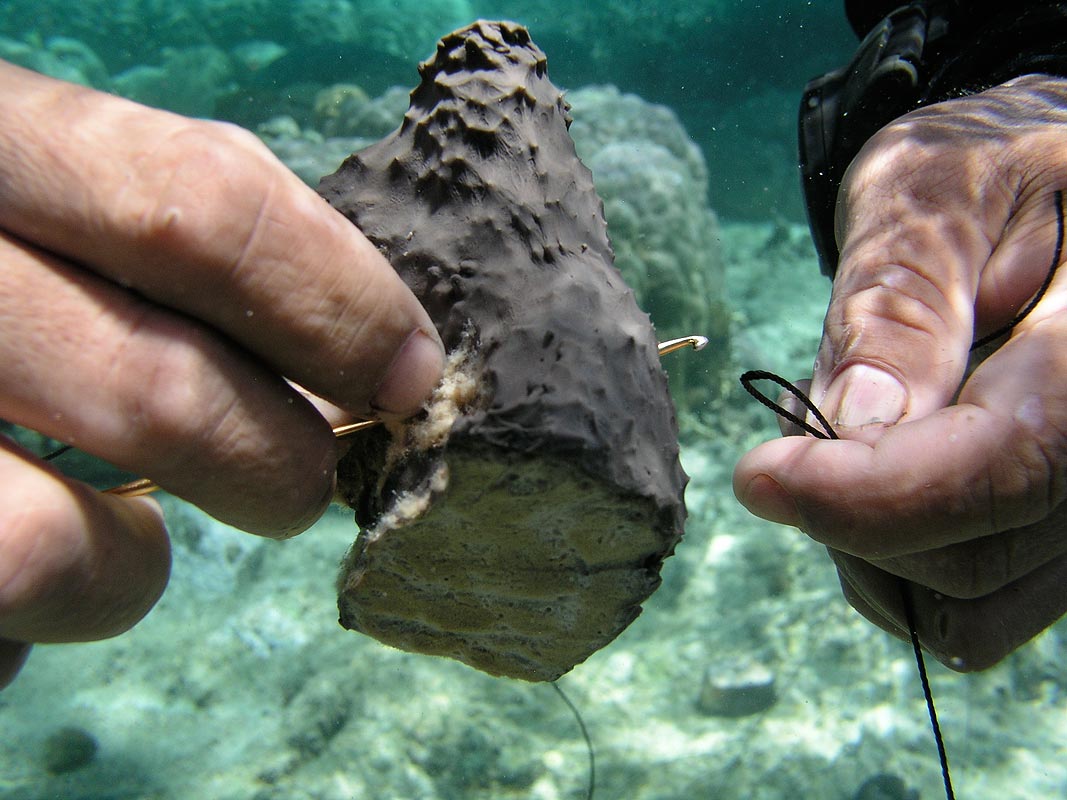

The sponge should be injured as little as possible and should never be squeezed!
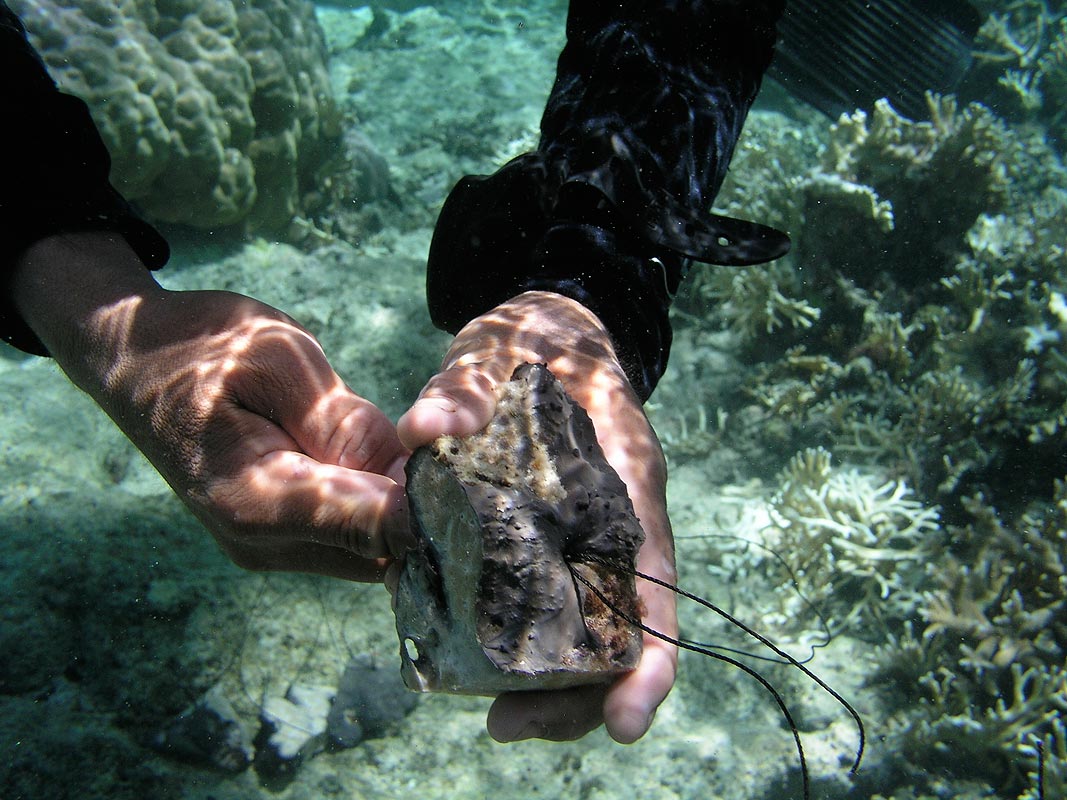

Knote the two ends together.
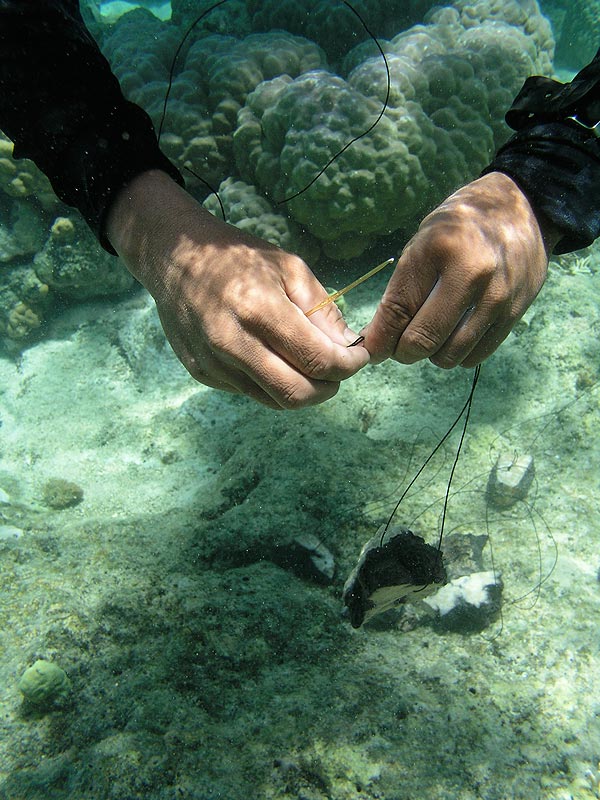

The seedlings are ready for sowing.
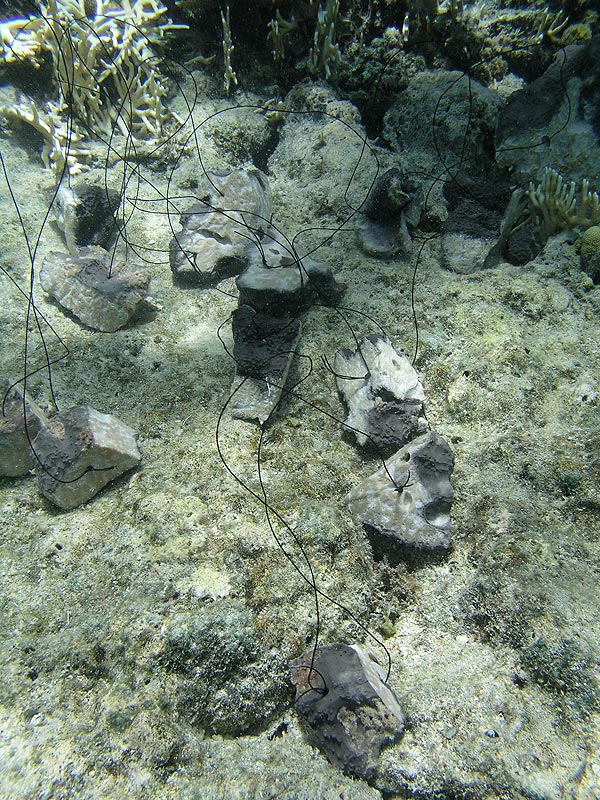

One seedling after another is fixed on the line.
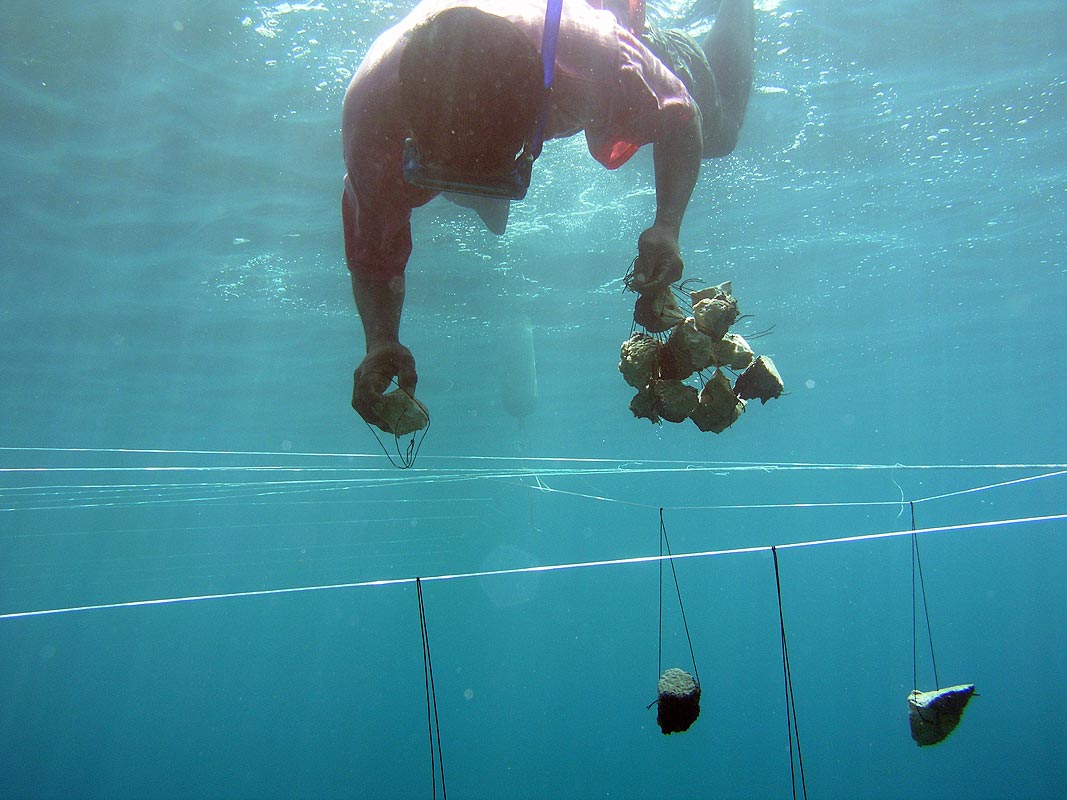

The less the flow the easier the spreading of the seedlings.


To avoid complications keep enough distance between the seedlings.
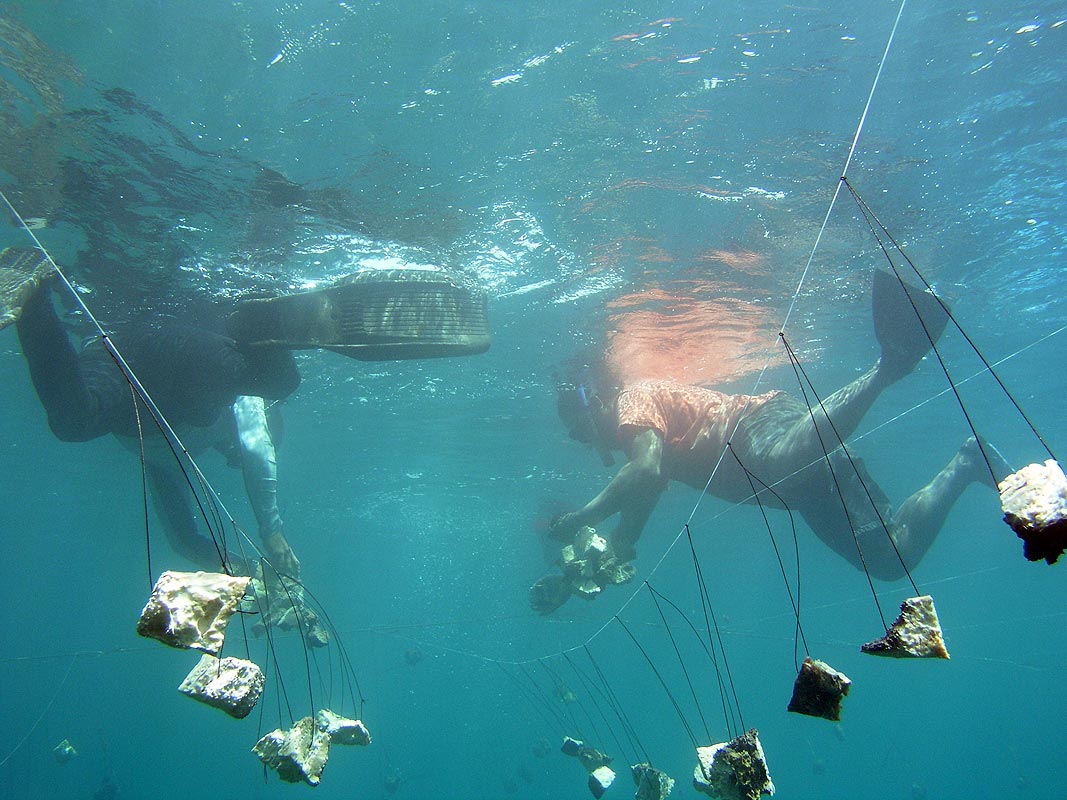

The seedlings should not be too small otherwise the ropes tear in strong currents and the seedlings are easily lost.
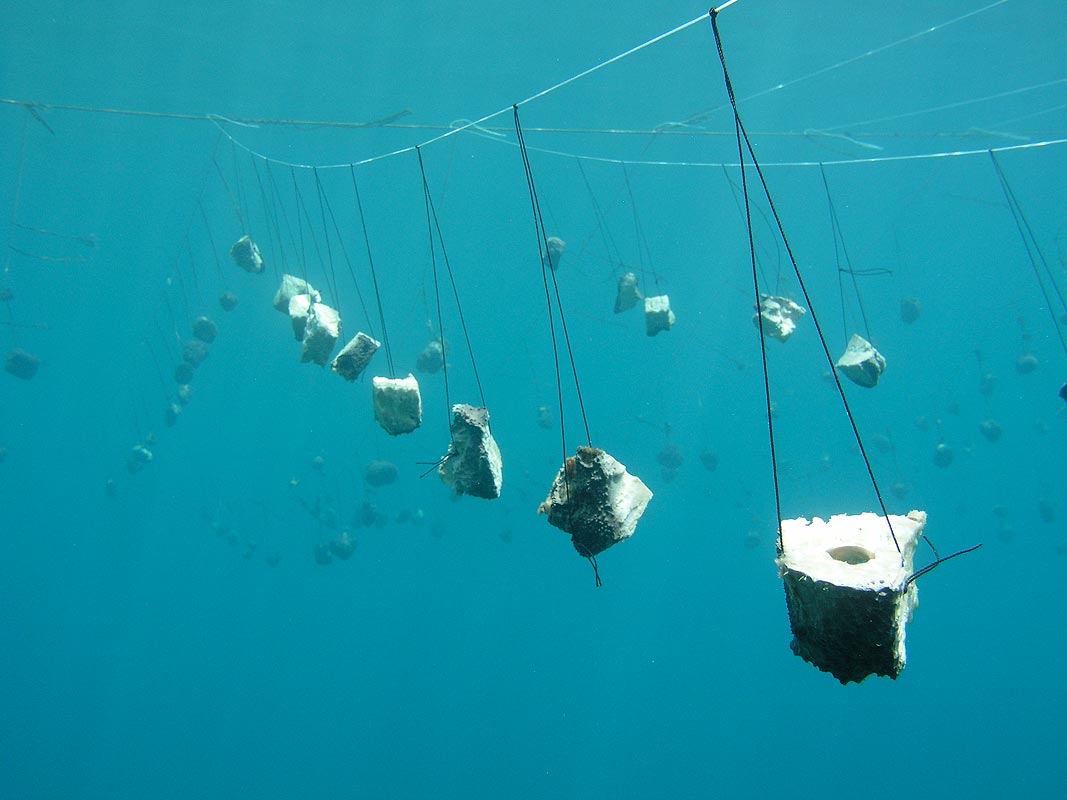

The seedlings should be inspected regularly and cleaned of fouling.
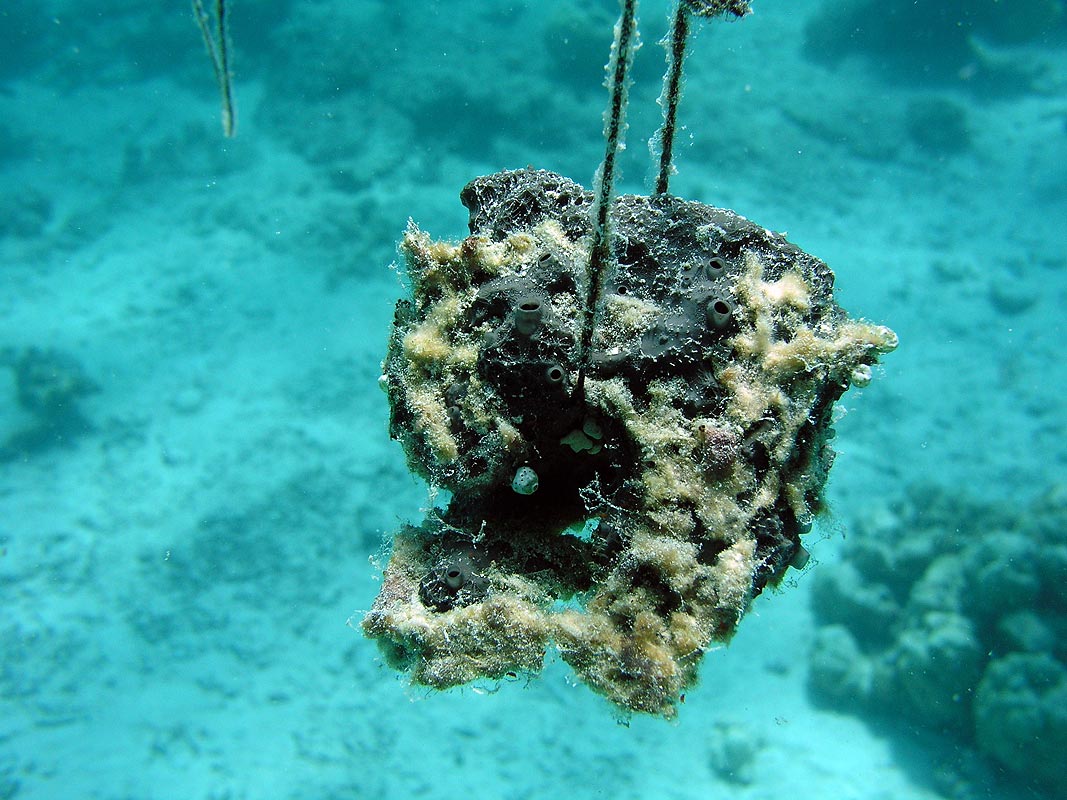

Not a good Schammfarmer at work. The fouling compete for food with the sponge and the sponge grows less and irregular.
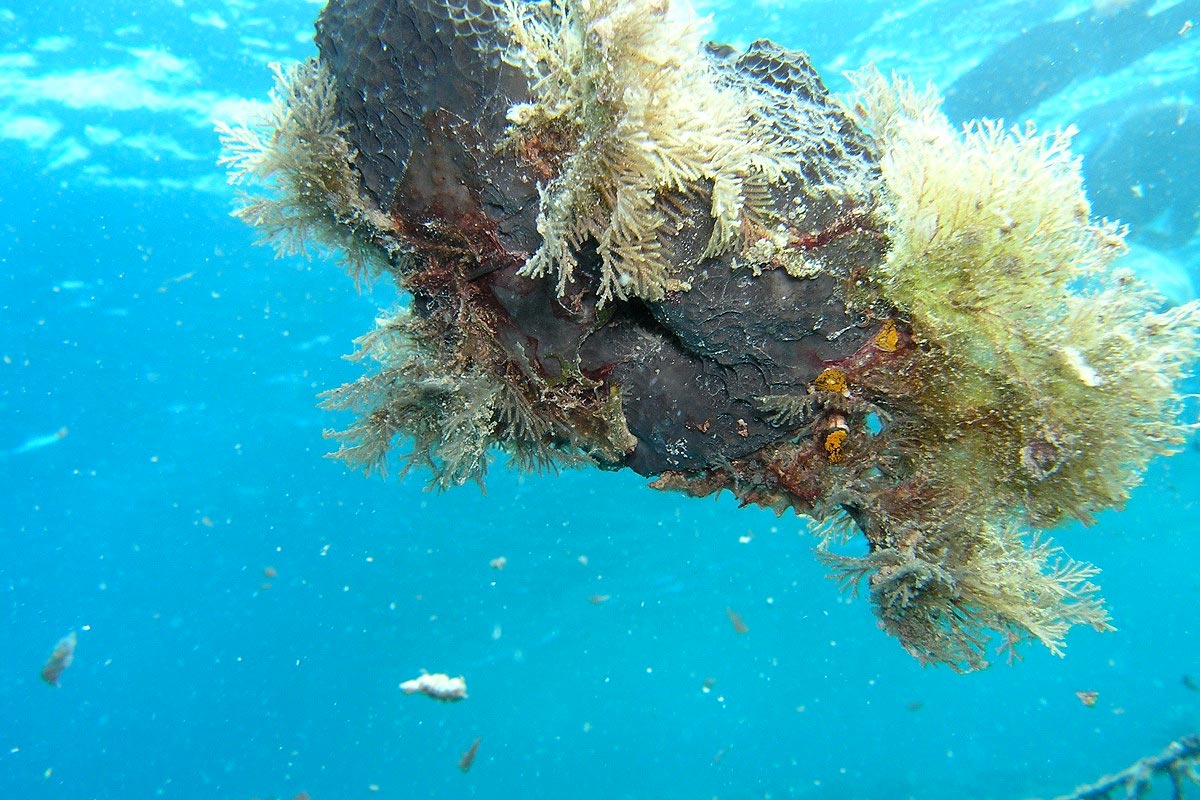

There are also pests that can overgrow the sponge in full so that it can absorb no more food.


Fouling and pests must be regularly removed by hand.
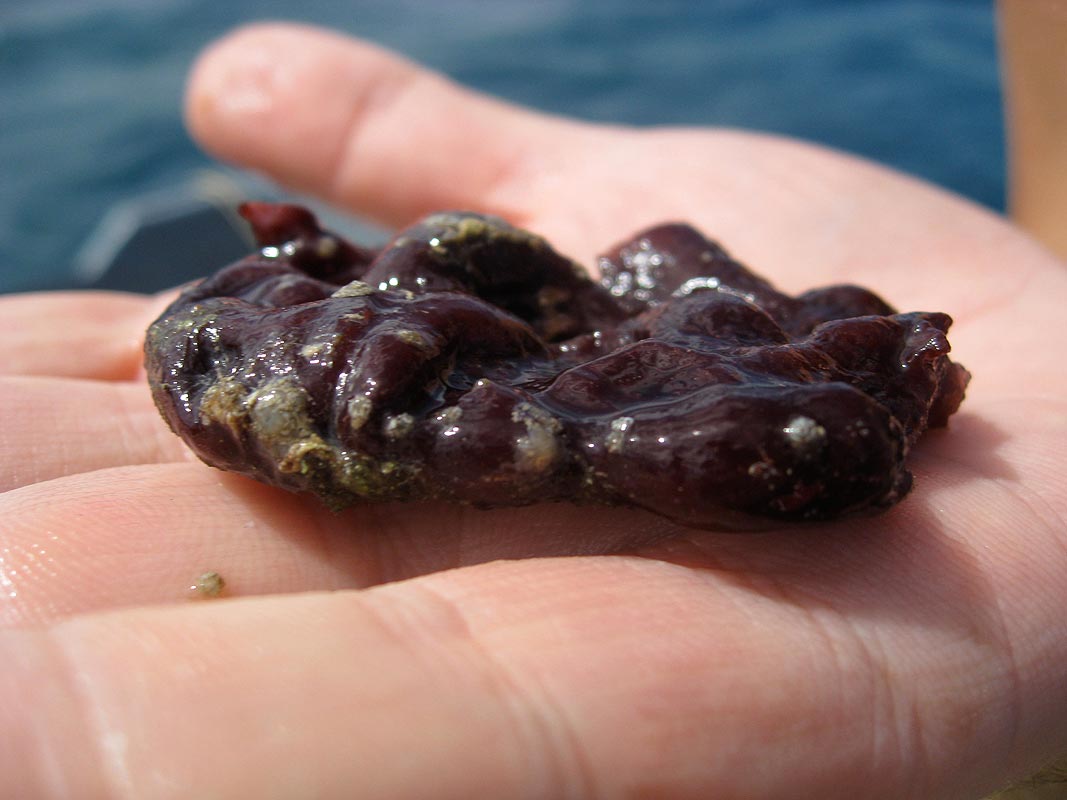

Also the ropes should be cleaned regularly, otherwise the constuction can collapse.
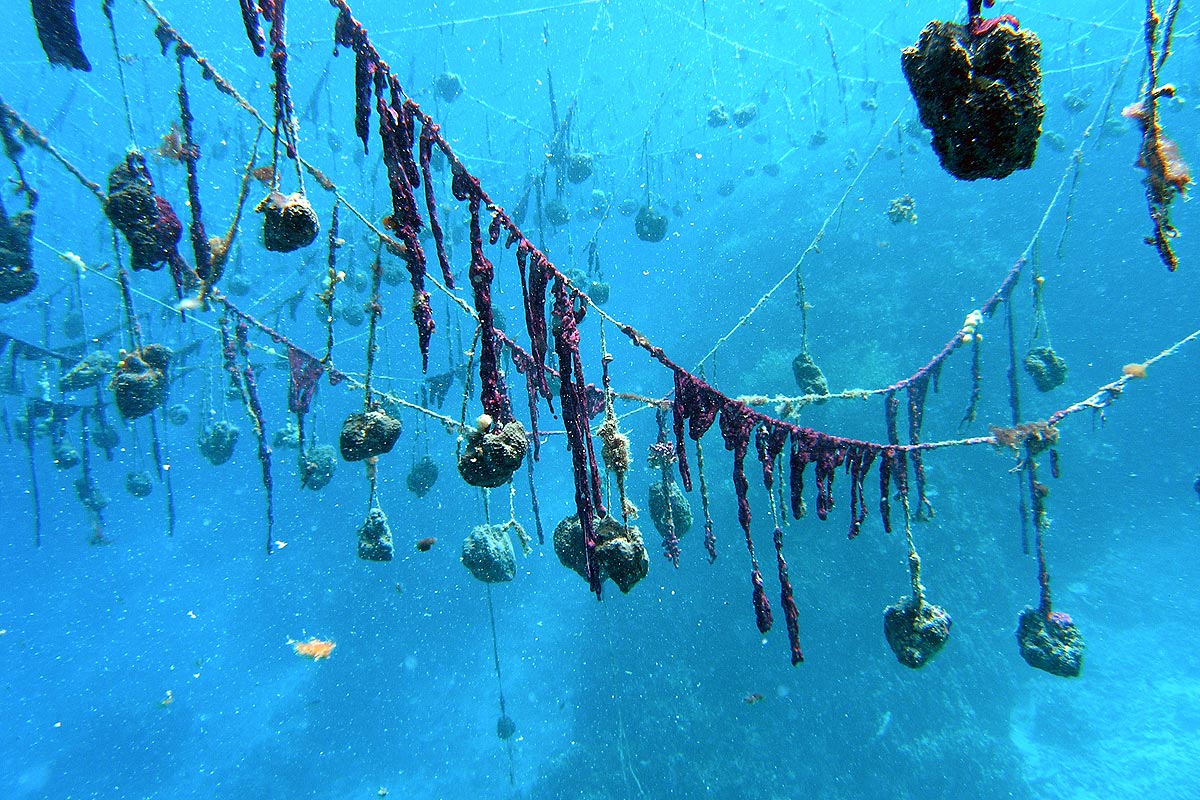

The skin has regenerated well around the whole sponge.
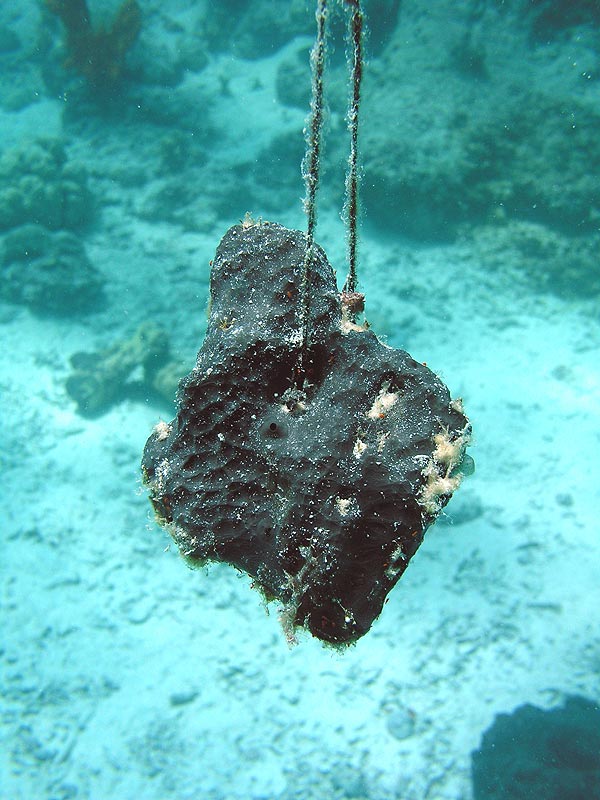

If enough food is in the water, the sponge grows well and assumes a rounded shape.
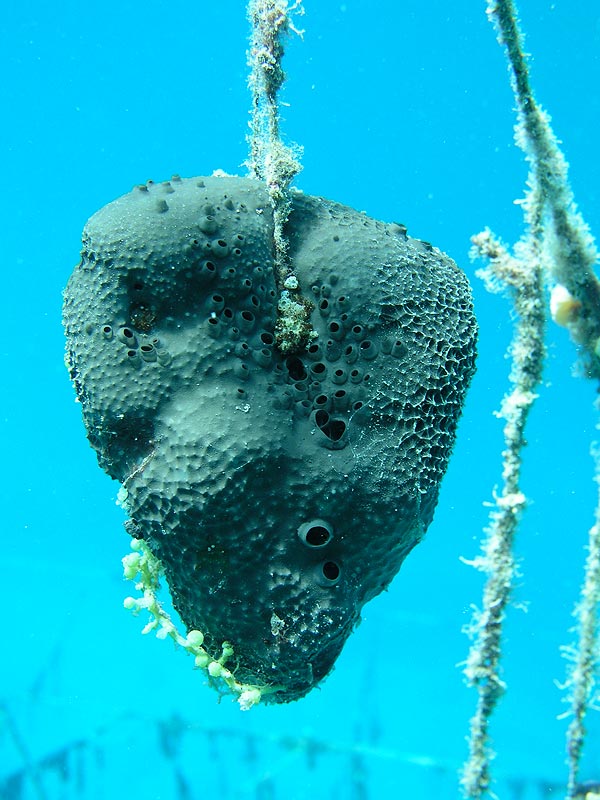

As soon as the sponge has a nice round shape and the desired size, he is ready for harvest
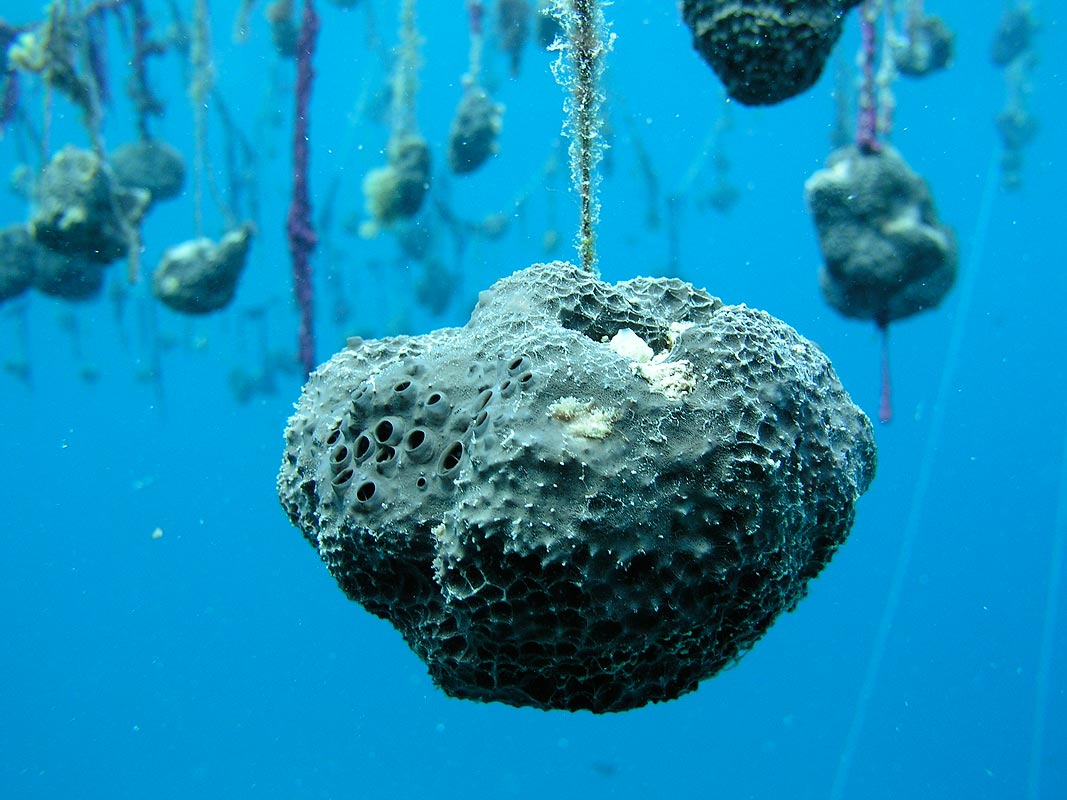

If constantly new seedlings are planted one years later we will continuously harvest.
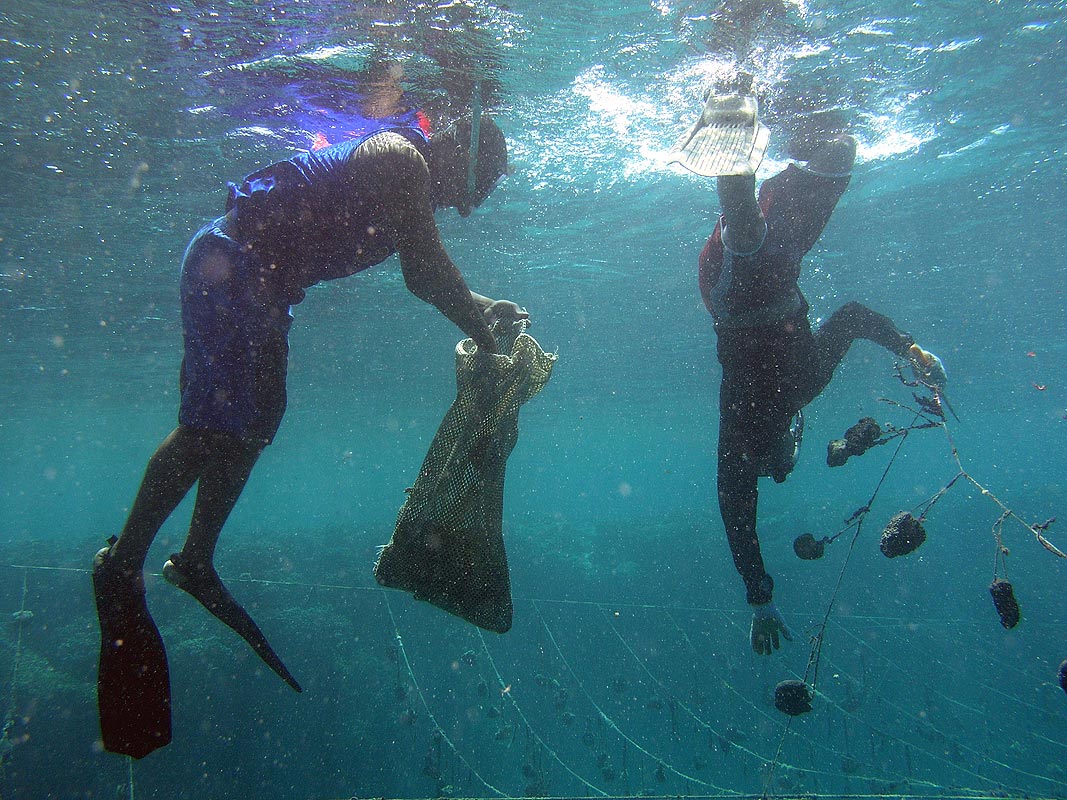

The picking is easy.
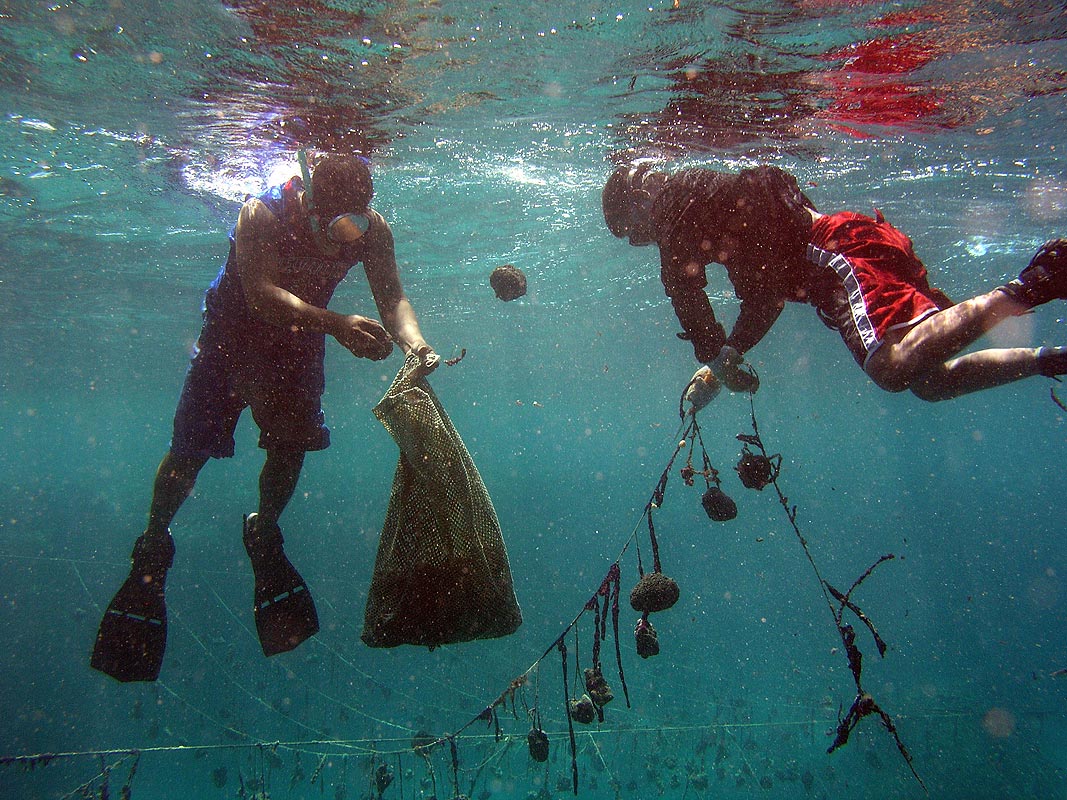

Back to the boat.


Now the sponge can be suspended to sunlight and air. He dies in the process.


After the death, the sponges are brougth back to the water for another four or five weeks. So they do not stink, and micro-organisms eat away the flesh and skin.
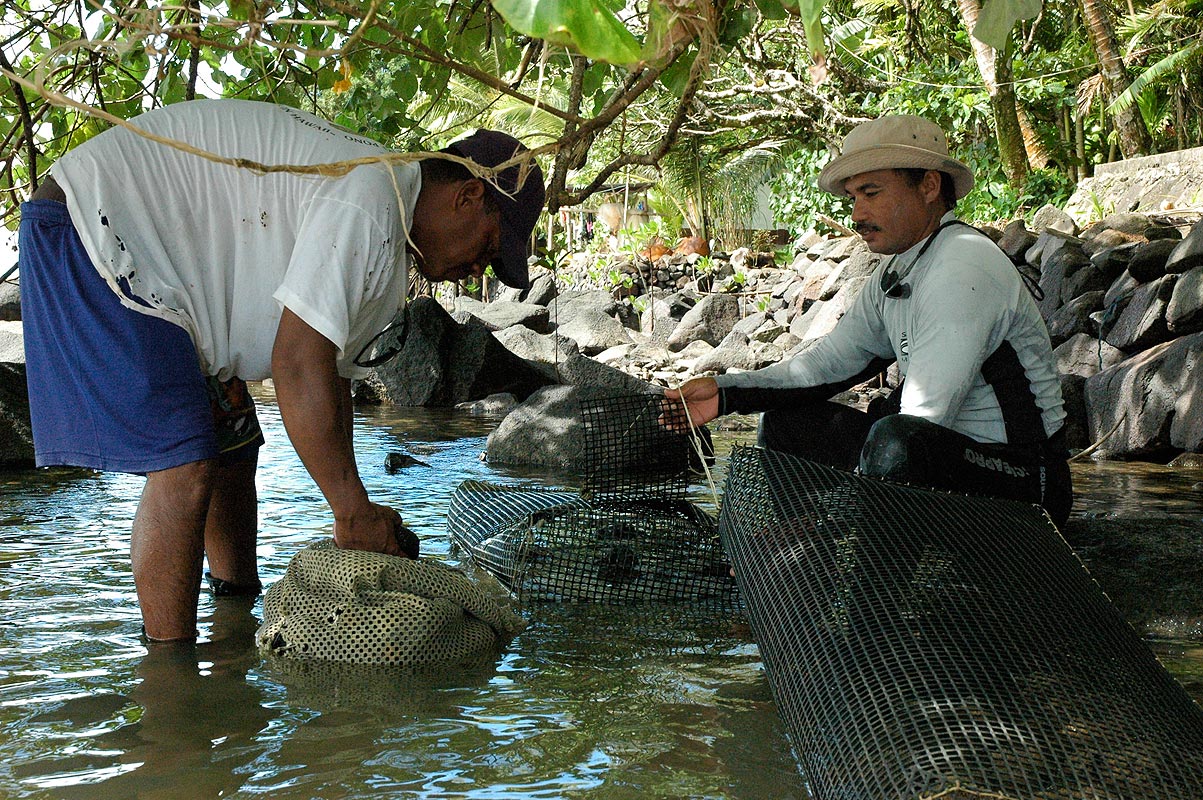

In the four weeks review the state of the sponges regularly. The sponge is ready if you can squeeze it slightly and it goes quickly back to its original form.
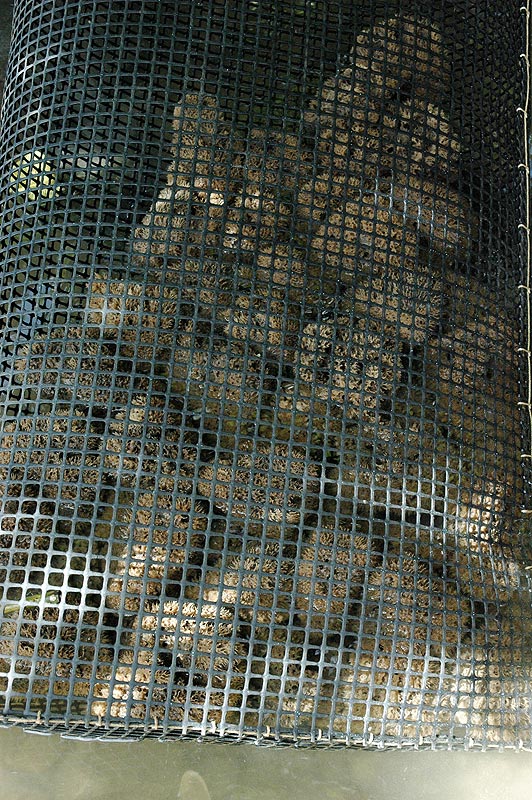

They are now still dirty and need cleaning.
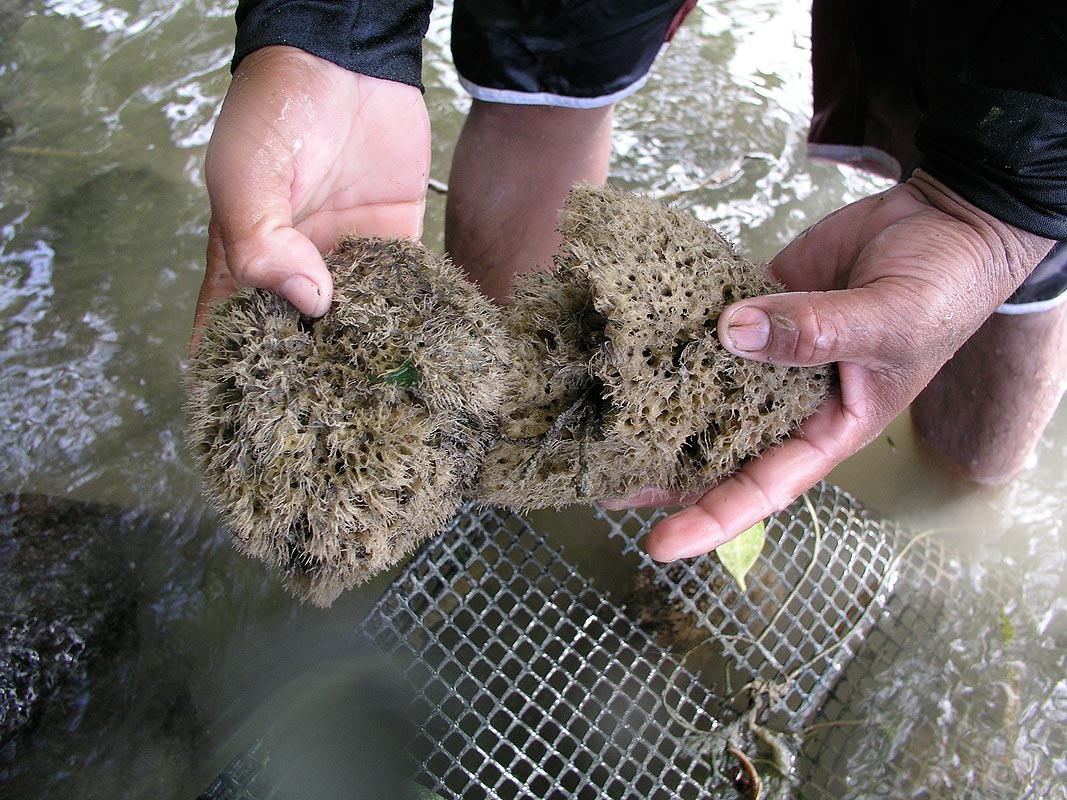

If there is no washing machine do a hand wash.


Use only very little commercial detergent.
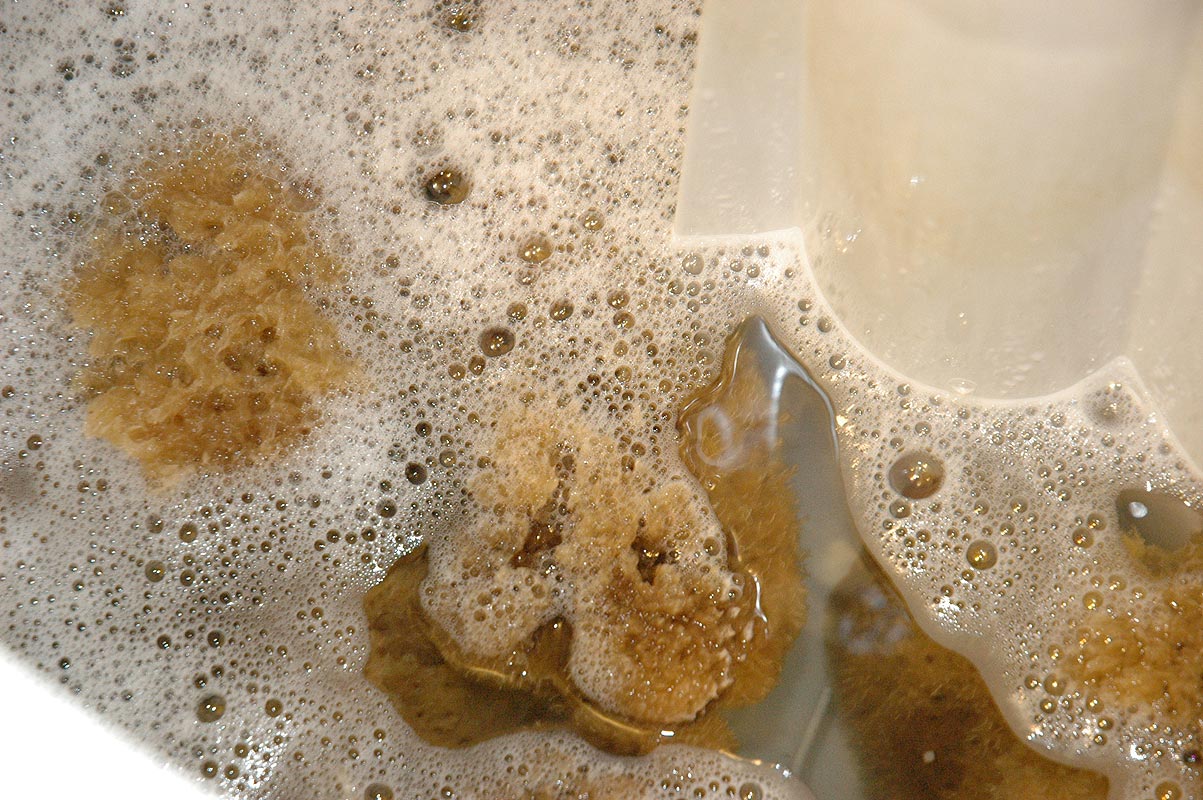

The washed sponges can be dried in the sunlight.
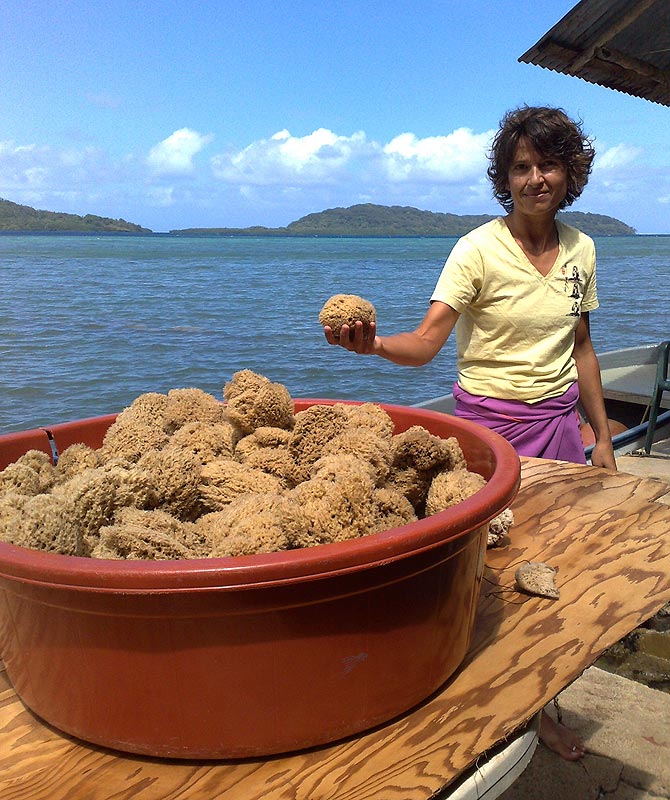

Sort the sponges on the size and shape.
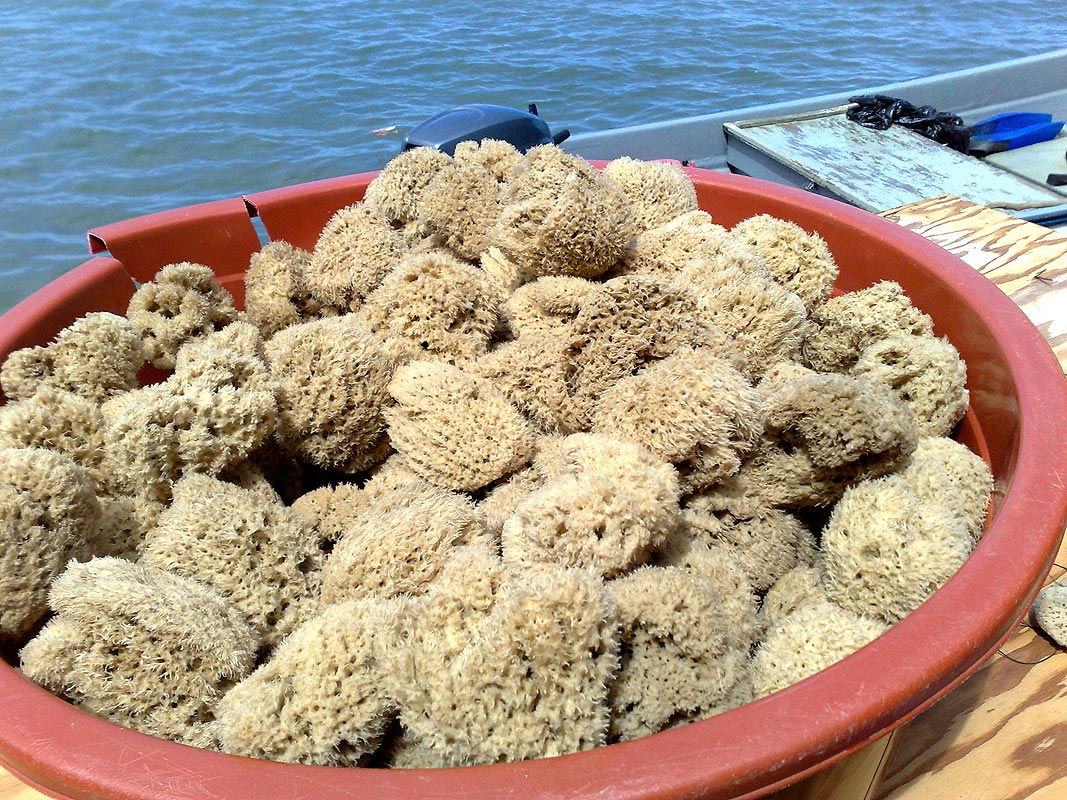

If each sponge can be sold for a few dollars, this is pretty money for the sponge farmer.


Packaging and branding are important, if the products are not sold to the wholesale trade.
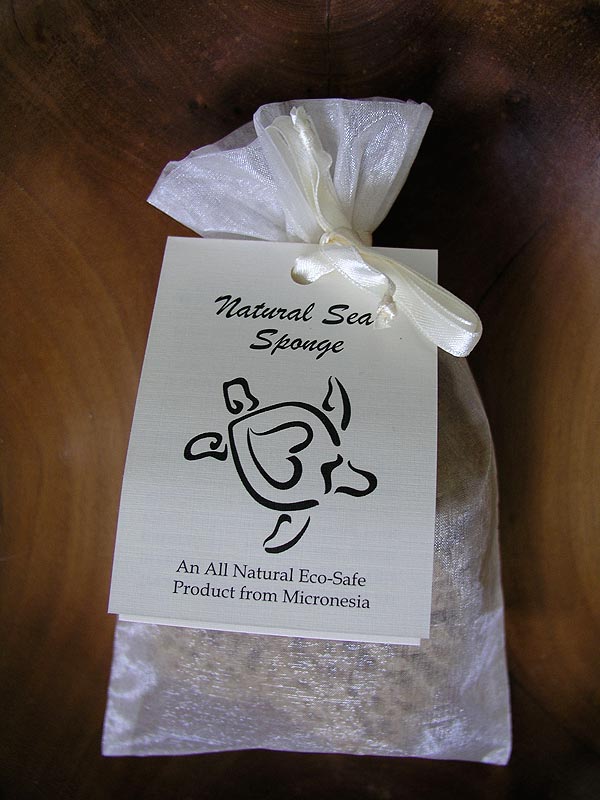

Keep the best sponges as broodstock away from the farm so they will not infect in case of an illness in the farm.


One does not need much for a sponge farm. Fishermen and sponge farmers in Phonpei, Micronesia.
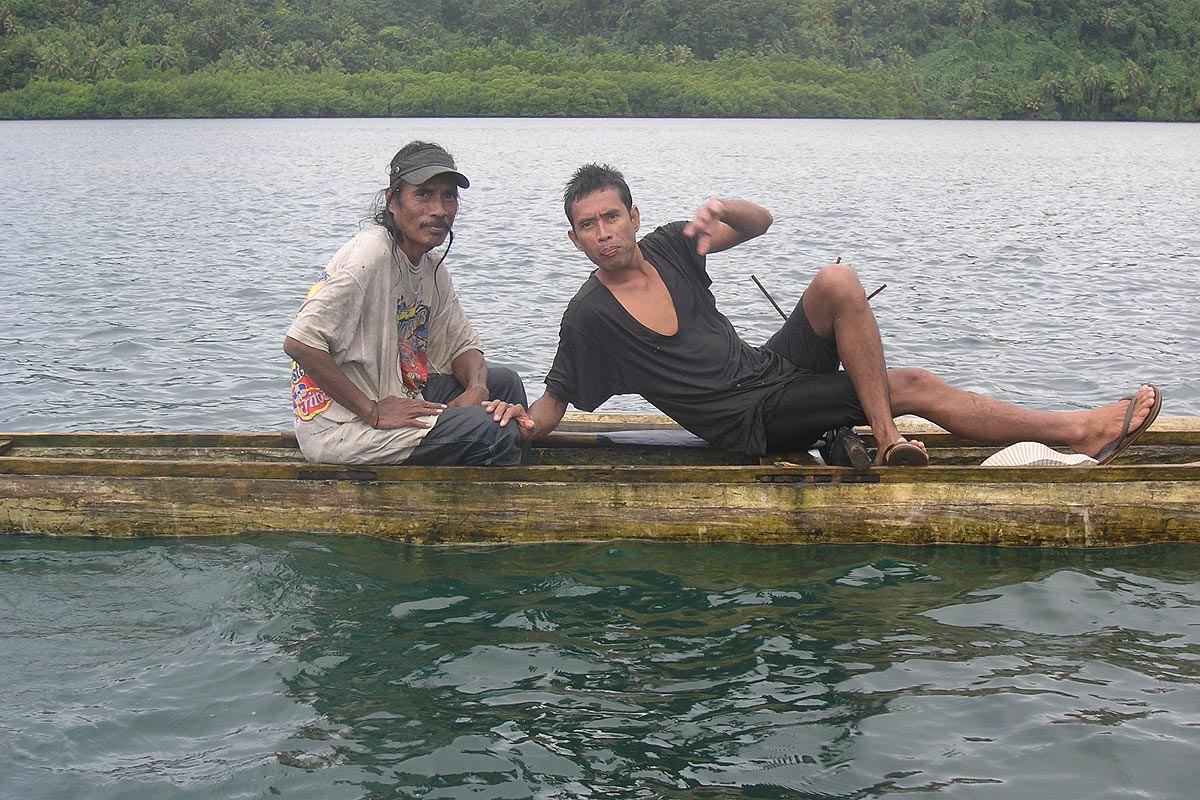

The most important moment for the sponge farmer. The payday!
Thanks to MERIP and Simon Ellis for many of the great pictures.
